Programming and Production
6-1
Television requires completely new program production techniques. The medium differs from the motion pictures, the legitimate stage and radio more than is generally believed. In planning a television program the usual problems of script, cast, and direction are encountered as well as many other problems which are foreign to other forms of entertainment.
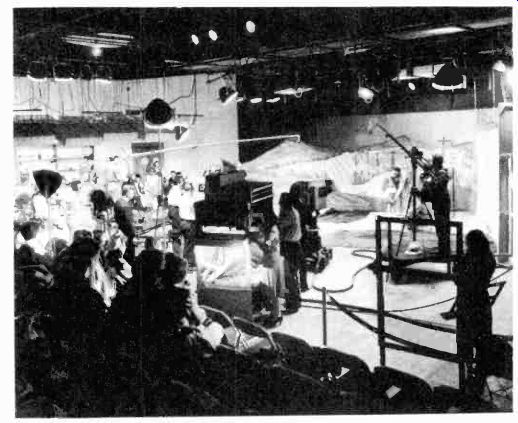
Figure 1. A typical television studio. (courtesy CBS).
Television has its own technical problems which impose limitations on programming. Among these are the restricted number of people which can be viewed on a receiver screen at one time, the limitations of the television camera and other equipment, and the generally insufficient length of time allotted to rehearsing programs with the equipment. The lack of rehearsal time stems from the economic impracticality of engaging large crews of technicians for long periods.
In addition to technical handicaps, the television medium is peculiar in that it has an audience of "viewers" who effectively constitute a small group of people sitting comfortably in their home. Behind his closed door, many of the average man's inhibitions are released, relaxation is the mood for which he strives, and self-consciousness is usually less evident. He reacts quite differently from the way he does when in a theater among hundreds of strangers. Thus the entertainment he witnesses must be geared to his environment. When John and Jane Doe leave home, they unconsciously assume a somewhat more self-conscious attitude which tends to make them less critical of the entertainment they witness. Outside influences at large gatherings are likely to temper a man's reception of entertainment, whereas the relaxing environment of his home will sharpen his likes and dislikes and make him impatient with any entertainment which does not fit his mood. Television programs must not be intruders, but must maintain the intimate mood prevalent in the home.
To achieve this intimacy on the average ten-inch receiver screen requires the use of many close-up shots. Long shots make the characters appear so small on the screen that the action is not discernible. The small size of television screens makes it difficult to present large scale productions in which many actors are on stage at one time. Much better effects are achieved by simplifying the program so that each camera shot frames no more than three or four people in the picture. In attempting to include more than this number, it is necessary to move the camera so far back that the figures become tiny and the intimate quality of the program is lost.
Many of these problems are transitory and will be eliminated as television grows in stature and takes its rightful place in the entertainment world. These problems result from deficient equipment, lack of money for programming, and in many instances from mere lack of experience on the part of the individuals engaged in working out the fundamentals of operation of a new business. In this section, the problems of creating a television show are discussed in the light of techniques which have thus far been developed.
6-2 General Problems. Before taking up the many aspects of production, it is well to review briefly the elements necessary in the creation of a television program. A television station is composed of several distinct units, each of which functions separately. Each unit depends upon the others to achieve a well-coordinated program.
Let us begin with the studios, the equipment and personnel associated with them, and the purpose and functions of each. A typical television studio is shown in Figure 1. The ideal studio is much larger than a radio studio in order to accommodate the scenery and equipment. Large, open floor areas are needed to achieve flexibility in the movement of cameras, lighting units, and sound equipment. Scenery is usually installed around the walls, allowing the technical crew, cast, and the mobile equipment to move about in the center of the floor.
A substantial part of the lighting comes from above the set.
The lighting units are secured to overhead pipes and may be adjusted according to the requirements of the particular scene.
The rest of the lights are mounted on dollies. These lights follow the action of the cameras. They are moved about during the program, by technicians, in order to create special lighting effects.
Two to four cameras are used in the studio. The cameras are of the iconoscope or image orthicon type, the latter becoming the more popular because of its greater sensitivity which reduces the number of lights required to illuminate the set. The cameras are mounted on dollies and are connected to the studio control room through long power and signal cables which permit movement about the studio floor. For each camera there is a cameraman who switches lenses, adjusts optical focusing, and is responsible for positioning his camera according to instructions received from the control room. Usually the cameraman has a helper who assists him in moving the camera and keeping the cables free from entanglement.
The studio sound is picked up by microphones which are attached to booms that can be swung in any direction to follow the action on the set. A sound technician is required for each mike boom. The movement of scenery and props about the set is handled by the property man.
Heading up the technical crew on the studio floor is the stage manager who is responsible for the activities of the entire group during rehearsals and actual productions. He receives instructions from the studio control room, as do all the technicians, by means of headphones and talk-back equipment.
The operation of the equipment is directed from the studio control room which is housed in a sound-proof enclosure located at one end of the studio. A large glass window between the studio and control room permits the control room crew to watch the activities on the studio floor. The control room crew is made up of the program director, the technical director, and several audio and video technicians, who monitor the sound and pictures. Contact between the studio floor and the control room is by means of intercom phones, over which the director controls the activities of the stage crew.
The master control room is another separate unit in the station which integrates the video and audio signals coming from the studios, the remote pick-ups, and the film projection room.
Station breaks and network programs are also funneled to this point. Like the studio control room crew, the master control technicians monitor the picture and sound before the program is fed to the transmitter.
The above units are the main centers of activity which contribute to the making of the program in a television station. In addition, there are dressing rooms for performers; a make-up room with a make-up artist in attendance; the crews' dressing room; property rooms and lockers; docks for storing scenery; and a paint room where the scenic artist adapts and paints the sets for each production.
The nerve center of the station is the Program Office, where production schedules are prepared and programs are thoroughly coordinated before going on the air. A library of recorded music is maintained by this office to supply background music and sound effects.
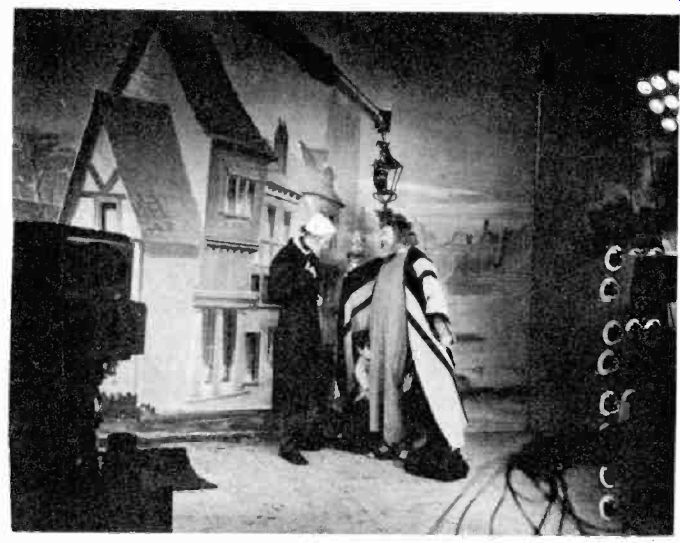
Figure 2. A typical painted background (courtesy DuMont)
6-3 Scenery and Sets for Television. Scenery which is used in television is very similar to theatrical scenery. In fact, most of it is constructed in regular scenic studios, and then transported to the television studio for painting. The basic unit of scenery is referred to as a flat. The flat consists of a wooden frame covered with canvas or other heavy material. Flats are either lashed or bolted together, depending upon the permanency of the set. They vary from four to twelve feet in width, and usually are no higher than ten feet, since this height has proven ample for even extreme long shots. On a theatrical stage the usual method of securing flats is by means of a stage brace which supports the flat, the brace being secured to the floor with heavy screws. On the television set, scenery changes must be made more quickly. The television flat is merely propped into position and held steady with a brace which is anchored to the floor by a heavily weighted block.
Painted canvas backdrops are used effectively in television, particularly to represent exterior scenes. These painted backdrops have an amazingly real, three-dimensional effect when viewed on the receiver screen and can be used to great advantage in conjunction with flats.
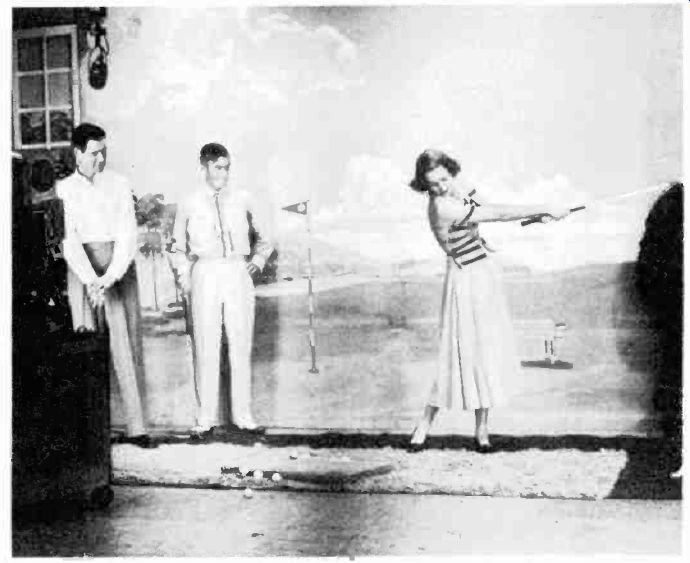
Figure 3. Suitable back-drop which tends to concentrate the viewer's attention
on the action in the foreground. (courtesy DuMont)
The painting of flats and drops for television requires a thorough knowledge of the medium and the camera's color sensitivity and resolution. Illusion can be resorted to far more than in a theatrical setting, for the television camera does not record the fine details which are recorded by the movie camera. A good motion picture has resolution equivalent to that of a three thousand line image as compared to television's 525 line image.
A technique of painting which is suitable for television is illustrated in Figure 2. The unrealistic effect of the painted backdrop is caught by the film camera which took the picture of the set. When the scene is viewed on a television receiver, the lower resolution of the television system makes the background appear surprisingly realistic.
The art of painting television scenery has been developed after years of testing the sensitivity of the camera to color and detail.
The true colors of a scene do not always register as equivalent shades of grey on the television screen because the camera tube does not have the same color sensitivity as the human eye.
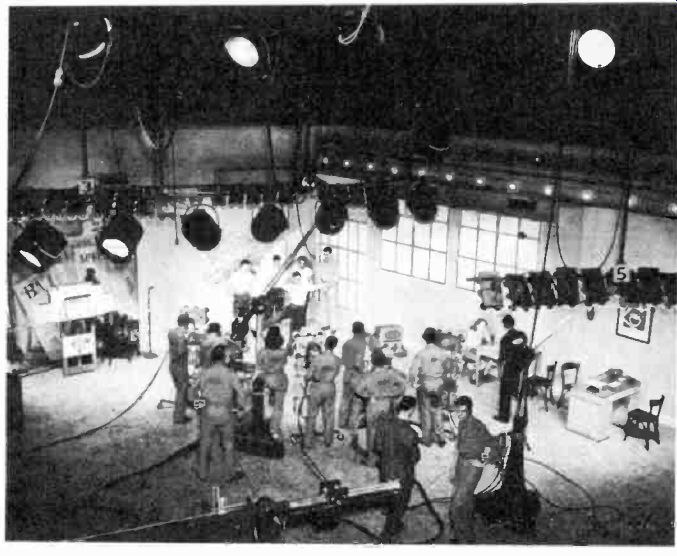
Figure 4. The set is located against the wall, while cameras and other equipment
are in the center of the studio floor. (courtesy DuMont).
Most image orthicon and iconoscope tubes are highly sensitive to either blue or red, depending upon their design. Other colors appear faded in relation to these colors. To avoid the distortion of color by the cameras, scenery is often painted in contrasting tones of the grey scale. To do this, the scenic artist must know the color response of the particular cameras which will shoot the scene. It has been found that scenery painted in shades of grey, rather than in color, is far easier to light properly.
Painted backdrops must have very contrasty lines to register well on the screen. They must not be cluttered or detailed or they will detract from the live action in the foreground. Scenery must be planned so that it looks well both in close ups and long shots. A backdrop which exemplifies these methods and permits the viewer to concentrate his attention on the action in the foreground is shown in Figure 3.
Usually a single set is less than 20 feet wide and from 8 to 10 feet in depth. Side flats are positioned to conform to the action, and as a rule they are set at a 30° angle off the backdrop. In present television studios, scenery is set up against the four walls, with the cameras, microphones, and mobile lighting units in the center of the studio as shown in Figure 4. This arrangement allows for quick movement of the equipment from one set to another. The scenes are set up in the sequence in which they occur, so that the equipment moves in one direction only and cables are less likely to be entangled.
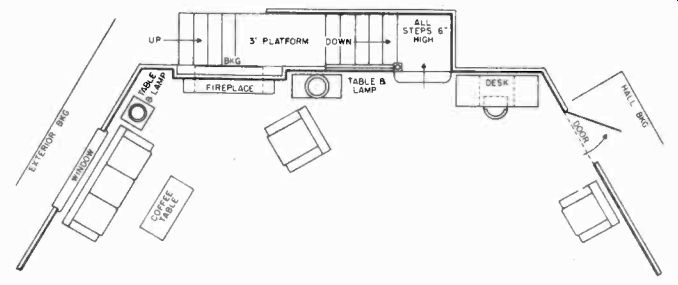
Figure 5. Floor plan for a television set.
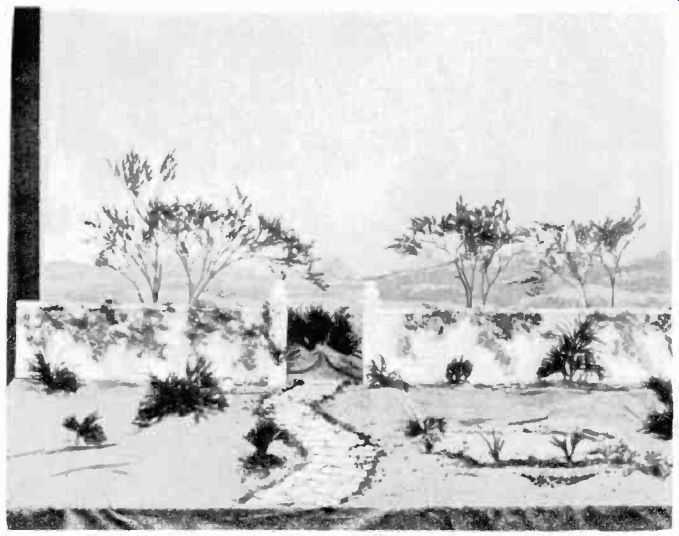
Figure 6. A miniature set. (courtesy NBC)
Figure 5 shows a floor plan of a set arranged for a complete television show. Each scene is enacted on a small portion of the overall set, starting from the left and continuing to the right.
Almost without exception, scenes are pre-set before the show and there is no striking or setting up of scenery during the performance. At the end of the day's programming, all sets are removed and stored in docks or rooms adjacent to the studio. The scenery, for the following morning's programs, is then set up.
The iconoscope camera requires an enormous concentration of over-all lighting. For this reason small winged flats are used to concentrate the light on the performance and scenery. With image orthicon camera less light concentration is needed, permitting sets to be spread out over a larger area and allowing for greater freedom of movement. Playing areas and backdrops can be better spot-lighted when image orthicon cameras are used because the set is not washed out by intense light as is the case with iconoscope cameras.
6-4 Projected Backgrounds. Projected backgrounds or process shots are often used in motion pictures to produce realistic, low-cost sets. To secure a background, a slide projector, located at the rear of the set, projects a scene onto a translucent screen which serves as the back wall of the set. The cost of painting scenes is thereby eliminated. Projected backgrounds cannot be used with the iconoscope camera because the intense foreground lighting washes out the projected image. Some backgrounds have been successfully projected for use with image orthicon cameras because they need less set lighting. With the trend toward the development of more sensitive pick-up tubes, it is entirely possible that projected backgrounds will be used to a greater extent in the future. This will increase the variety of stage settings and lower overall production costs.
6-5 Miniature Sets. Miniature settings are used effectively on television. Here again the camera provides an effective illusion of reality even though the original scene is in miniature.
Such scenes as ships in a harbor, an overall view of a city, or the burning of a building can be done in miniature rather than by recording them on film which is difficult to integrate with live action. A typical miniature set is shown in Figure 6. When this scene is picked up by the close-up camera, it fills the entire screen and appears quite realistic.
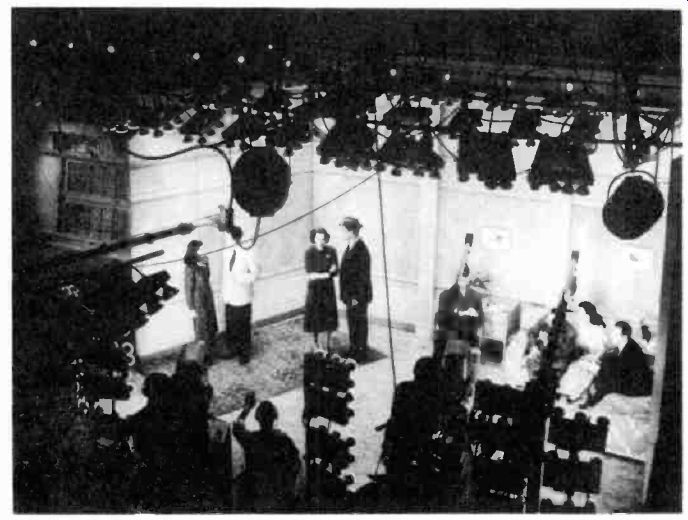
Figure 7. Large banks of lights are necessary with iconoscope cameras. (courtesy
DuMont)
6-6 Lighting. Until the advent of the image orthicon camera.
television studios required an enormous amount of light because of the low sensitivity of the iconoscope camera. Often 40 to 50 thousand watts were expended in lighting the scene and the actors sufficiently to eliminate deep shadows and to obtain proper picture contrast. With iconoscope cameras, uniform lighting was required from every angle to adequately illuminate the performers and scenery (Figure 7). The heat from the intense lights caused great discomfort to the performers and technicians working in the studio. Protracted periods of time before the cameras, either in rehearsal or in actual performance, were exhausting, and much of this discomfort was apparent to the viewers. Lighting from all angles eliminated the effect of depth in the picture, so that the foreground and background appeared to be in the same plane. An actor's face would often seem to be pasted to the scenery.
The lighting problem has been considerably lessened with the development of image-orthicon cameras for studio work. Requiring far less lighting on the set, these cameras are so sensitive that care must be taken to avoid over-lighting. Lighting beyond a certain point results in the saturation of the picture.
On the screen the image appears "muddy", and under conditions of extreme saturation a negative of the picture is obtained. Between 2,500 and 5,000 watts of lighting are sufficient to fully illuminate a studio set when image-orthicon cameras are used.
A lighting setup for image-orthicon cameras consists of incandescent lamps clustered in broad housings to produce soft, diffused lighting. Usually, each cluster consists of approximately one thousand watts of light. These units are placed above the set and about ten feet in front of the action. The lights are directed toward the performers at an almost horizontal angle.
This affords plenty of broad lighting of the faces and cancels out the shadows under the eyes and chin. Additional lights are often placed on movable floor stands at a height of approximately three feet, giving additional broad, low lighting. Backlighting is also used to light the background, to highlight, and to outline the objects in the foreground. The space between the foreground and the background is not brilliantly illuminated, thereby giving depth to the picture and separating the performers from the background. Broad, low lighting, and the highlighting of portions of the set are, of course, possible only with sensitive image-orthicon cameras.
Occasionally a 3000-watt spotlight is used effectively in conjunction with the general lighting to highlight a specific area.
With the sensitive image-orthicon camera not much highlighting is necessary since the tube itself exaggerates small differences in contrast and shadow.
Incandescent, mercury, and fluorescent lights are used for illuminating television studios. A studio installation with fluorescent lights is shown in Figure 8. Each type of lighting equipment produces a different color and makes clothing, scenery, and performers' faces appear distorted to the camera.
Make-up and color of clothing and sets must therefore be suited to the particular lighting installation of each studio.
6-7 Make-up. As television progressed from the early days of insensitive cameras and overpowering lighting, so did the theory of make-up change radically. Formerly, it was considered necessary to exaggerate the make-up to compensate for the color response and insensitivity of the camera. Green or blue tinted grease-paint and black lipstick was liberally smeared on the performers since these colors showed up best with the iconoscope camera. With image-orthicon cameras it has been found that simple make-up shows up best. Naturalness is the key-note for present day make-up. It is correct to think of make-up as simply an aid to lighting, not a deceiver of it. Make up is now used only to counteract slight distortions of the actor's features, or shadows caused by the lighting.
With the preponderance of light coming from above the actor's face, the worst shadows occur under the eyes, nose, and chin.
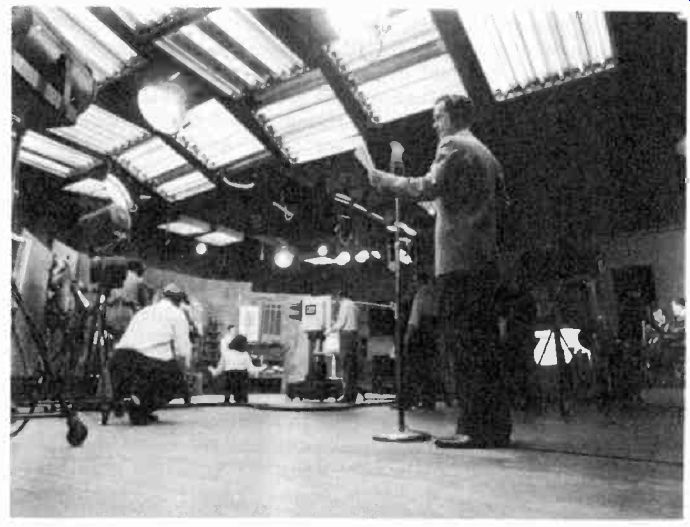
Figure 8. A studio equipped with fluorescent lighting. (courtesy CBS).
The male actor's beard (even though he is freshly shaven) causes some shadow. Unless the beard is covered by proper make-up, it gives the actor a slovenly, un-kept look. During the epic televising of the 1948 political conventions in Philadelphia, where thousands of politicians, great and small, appeared before the television camera, and where the vote-getting possibilities of television appearances became obvious, there was a rush for the grease pots, when it was learned how unattractive a man appeared without make-up.
For men, a light base of grease-paint is sufficient to avoid beard shadow and eliminate other serious shadow pockets. The grease paint is then powdered over with a light powder; sun-tan or ruddy shaded powders are not employed. Eye shadow and lipstick are used sparingly or not at all on males since their use gives an obvious "make-up" look when picked up by image orthicon cameras.
Television make-up for women is much like ordinary street make-up with certain qualifications. Here again a light grease base is used. If rouge is used at all, it is used very sparingly, blended in with the base. Eye shadow and eyelash make-up are applied far more subtly than for stage work. Bluish-red lipstick is required for iconoscope cameras to obtain proper rendition of the lips. A light red lipstick is adequate for image orthicon cameras. Hair must be kept away from the face as much as possible to avoid shadows. Pan-cake make-up is not as satisfactory as a very light-weight grease-base and powder since the former produces a flat effect. The contours of the face are lost with pan-cake make-up and the texture of the skin appears on the screen to have a hard, unnatural look.
Television make-up much more closely approximates motion picture technique than that of the stage. The stage actor knows the amount and colors of the lighting, and the distance between himself and his audience. Consequently, he uses make-up to allow for these factors, and to produce whatever effect he chooses. The image-orthicon camera, however, seems to peer through any such obvious make-up and show it up for what it is.
In extreme close-up shots even the pores of the skin can be seen so that the use of heavy, obvious make-up is not possible.
The time factor in quick-changes for television is important, and interesting experiments have been made in superimposing one make-up over another. For example, an actor may be called upon to age twenty years in a few seconds between scenes.
With no time to effect a complete change of make-up it has been found that a light layer of make-up can be laid over the basic make-up, and then readily washed off when a quick change is necessary. However, extreme character make-up is dangerous in television for the image-orthicon cameras are quick to point up any "phoney" quality of make-up. Suitable types must be cast, wherever possible, for character roles.
Make-up for television will change constantly as camera designs improve and different lighting installations are employed.
There are no set rules that can be adhered to for long. The trend toward simplification is apparent, and it is unlikely that the technique of plastering heavy make-up to meet the deficiencies of the camera will return.
6-8 The Television Camera. Some of the physical characteristics of the television camera have been touched upon during the discussion of lighting, scenery, and make-up. It is well to discuss briefly the operation of the television camera in order to understand the role it plays in helping to create the television program.
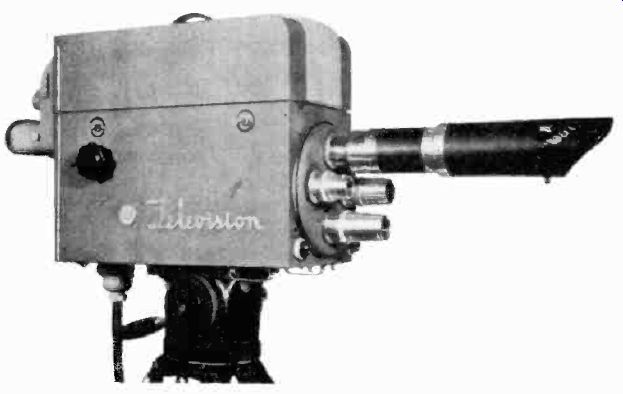
Figure 9. Studio camera equipped with lens turret.
The television camera converts the varying shades of light, which constitute a picture, into varying pulses of electricity which can be transmitted through space. The image is focused by a lens onto a photo-sensitive surface in the camera pick-up tube. The electronic camera, in effect, causes a beam of electrons to sweep across the image focused on this surface. The sweeping motion of the beam cuts the picture into thin horizontal lines, which, for all practical purposes, are converted into equivalent electrical signals that are joined end to end. The picture is dissected into 525 horizontal lines, 30 times a second.
The electrical signals which represent all the black and white shades on each of these lines are passed on to the transmitter.
Image-orthicon cameras are usually equipped with a group of three or four lenses mounted on a rotating turret. This arrangement permits rapid switching of lenses. The lenses are mounted on the turret as shown in Figure 9. There are generally two inch, three and three-quarter-inch, four inch, and ten and twelve inch lenses on the turret. The two-inch lens is a wide-angle lens, used for long, overall shots of the scene. The three and three quarter-inch and five-inch lenses are best suited for medium shots, and the ten or twelve-inch lens for extreme close-ups.
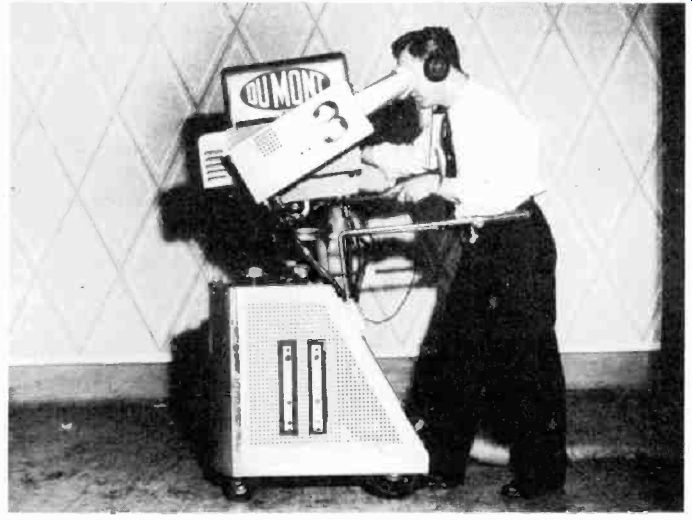
Figure 10. Camera and operator. (courtesy DuMont)
6-9 Color Response. The iconoscope camera has poor response to red. On the screen, objects of this color have a washed out appearance. Red colors must therefore be avoided in scenery, clothing, or make-up when this type of camera is used.
Dark blues, browns; and blacks are best suited for the iconoscope.
The image orthicon camera picks up most colors equally well, except for blue, to which it has a tendency to over-respond.
Blue colors appear too black on the screen. For example, the bluish beard lines on men's faces show up dark and must therefore be covered with make-up.
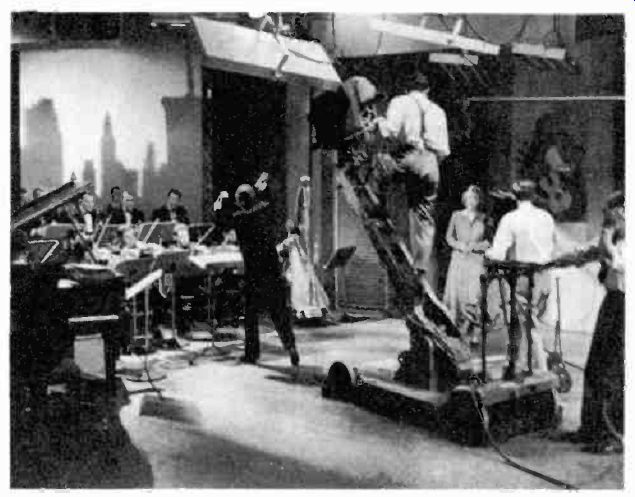
Figure 11. Boom camera. (courtesy CBS)
Background scenery for the iconoscope camera is painted with great contrast to avoid its fading into a haze. With the image orthicon camera, backgrounds must be toned down considerably.
The color response of these two cameras is so completely different that one must know what type camera is in use in a studio when planning a production. The color of the scenery, as well as the costumes and make-up, is dictated by the camera.
6-10 Operation. The television camera is operated by one man as shown in Figure 10. This type of camera remains stationary during the show once it has been set into position. Only the camera head is moved from left to right or up and down. A variation of this camera is the dolly camera which is used for moving in and out of a scene while on the air. The dolly camera needs two men for operation, one for moving the camera and keeping the cables free from the dolly wheels, and the other for focusing and panning. A third type of camera is the boom camera, which is also operated by two men. This is a camera which is mounted on a boom that can be raised or lowered to get angle shots from above or below eye level, as shown in Figure 11. It is important in planning camera action to know the type of cameras which are available in the studio so that they may be positioned for desired shots.
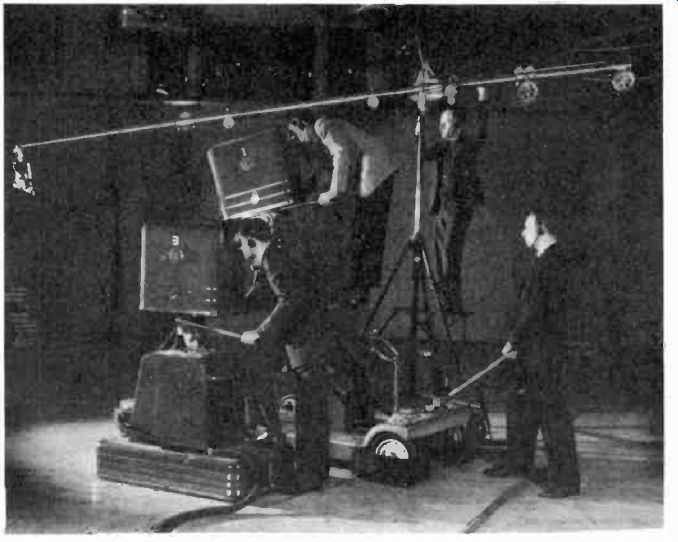
Figure 12. Studio crew and equipment. (courtesy GE)
6-11 The Camera and Studio Crew. Since the operation of the cameras depends upon the activities of other personnel in the studio, it is well to describe the camera crew in relation to the entire studio crew. Heading the studio crew is the stage manager who oversees the production from the floor, gives the performers their cues, and is generally responsible for the crew's activity. A typical studio crew consists of two or more camera men (depending on the number of cameras in use), an additional man to help dolly the cameras and to keep the cables from tangling, and one or more men to position the floor lighting units (banked groups of lights mounted on dollies). There is a mike
boom operator for each mike in use. It is his job to follow the action of the scene with the microphone. Usually there are one or two other men who see to it that equipment is moved easily and quickly. Rounding out the crew are the property men who take care of prop changes during the show. A part of the crew for a television program is shown in action in Figure 12. Note that the crew members wear headphones through which they receive orders from the studio control room.
The trained studio crew is of utmost importance if smooth running programs are to be produced. Success or failure of a production depends to a large degree on the crew's familiarity with every detail. All the careful planning and work goes for naught if a crewman errs because of unfamiliarity with the script or action sequence. It takes just one or two mistakes of this sort to cast an amateurish quality over a program and spoil its effect. Naturally, with the limitations placed upon production rehearsals, as mentioned earlier, there are many chances for technical slip-ups. But a well-trained technician can overcome these limitations and aid materially in securing a smooth performance if he is given the opportunity, during rehearsal, to learn the sequence of a show, and the camera shots required.
During the show a good cameraman needs only brief instructions from the stage manager, on the floor, and the program director, in the control room, to correlate camera shots with the script. The cameraman must prepare for the next shot coming up once he knows he is off the air, and that another camera is on. He must quickly reposition his camera, change the lens if necessary, and re-focus for his next shot within a few seconds.
He must check the lighting and call for repositioning of the mobile units if necessary. The cameraman must know his job so thoroughly that he can act quickly, exercising split-second judgment. He must always coordinate his work with that of the rest of the crew, for unless all technicians on the set operate as a team, split second timing cannot be achieved.
6-12 Camera Technique. Camera action and the selection of shots is usually planned at the first script reading. This insures coverage of all important bits of action in the script and eliminates drastic changes in later rehearsal. Actors take direction more intelligently if they know from the start where the cameras will be during the performance and what kind of shots are to be taken. Action on the set must always be staged with specific camera shots in mind.
Many different techniques, to achieve a variety of shots, are possible with the television camera. In changing from one camera to another, there are several rates of speed at which one camera may be turned off and another on.
6-13 The Clip. The simplest type of camera switching is the clip. It involves the switching, almost instantaneously, from one camera to another, with no perceptible delay observable on the screen.
6-14 The Dissolve. Another popular technique, borrowed from the motion pictures is the dissolve. This is done by fading down one camera as the other is faded up so that for a brief moment both pictures are seen on the screen.
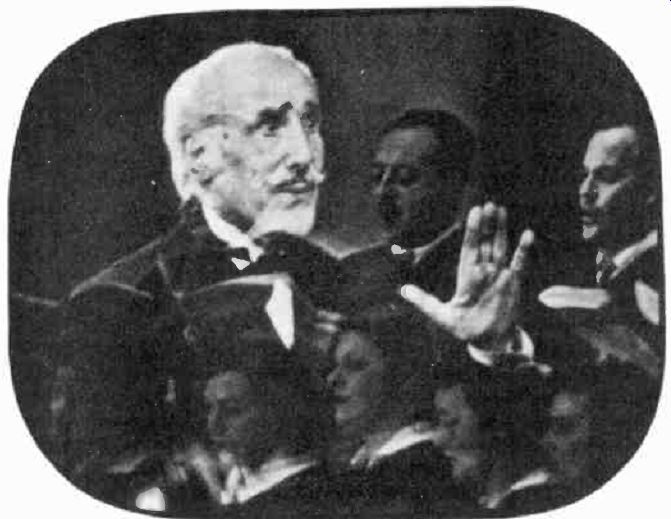
Figure 13. A superimposition as it appears on the television screen. (courtesy
NBC).
6-15 The Fadeout. A third method is the fadeout. One camera is faded down completely to black until no picture is visible, then another camera is faded up from black for a new picture.
The fadeout method has a tendency to slow down the pace of a production and is usually used only in going from one set to another, or in denoting a lapse of time. The effect is much the same as a curtain being lowered briefly in a theater for similar purposes.
Unfortunately, when a picture is not being received on a tele set screen, retrace lines appear. Since the screen is not altogether blacked out, a good deal of the effectiveness of the fadeout is lost. For this reason, fadeouts are advisable on but a few occasions.
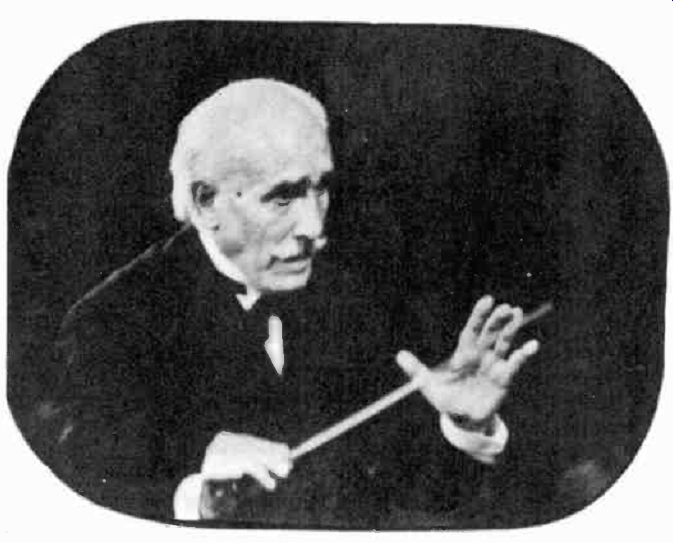
Figure 14. A closeup shot as it appears on the television screen. (courtesy
NBC)
6-16 The Superimposition. As indicated above, two cameras may be on at the same time. When both cameras are on the air for a length of time, the technique is called a superimposition.
Superimposition is effective in tying into one picture the action taking place at two different points or at different time intervals.
It is ideal for time "throwbacks", portraying a dream, and other unusual effects which are limited only by the ingenuity of the program director. For a super imposition the images may be balanced in intensity, or one image may predominate over the other.
A typical superimposition shot is shown in Figure 13.
6-17 De-focusing. A purposely de-focused camera is sometimes effective in creating a mood. De-focusing is often used when changing from one scene to the next with the same camera.
As a scene ends, the camera is gradually thrown out of focus until no objects are discernible. During this brief interval, the performers can change position or minor scenery changes may be made. The camera is then brought back into focus and the next scene begins.
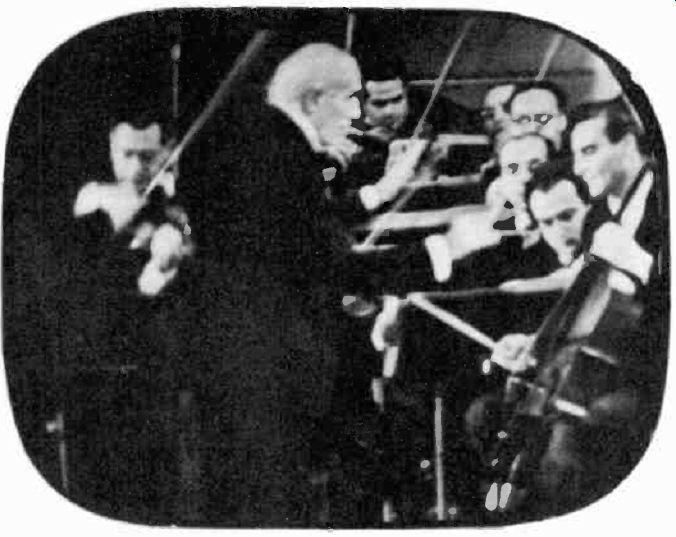
Figure 15. A medium shot as it appears on the television screen. (courtesy
NBC)
6-18 Panning and Dollying. Panning is the vertical or horizontal movement of the camera head as compared to dollying, which consists of moving the entire camera closer to or further away from the action on the set. Panning is used to follow action, but it is wise not to resort to this technique too often as it is tiresome to the eyes. The dolly shot is effective, but is not accomplished without difficulty. It necessitates moving the camera and cables while on the air, which may cause disturbing noise and the fouling of cables. Jerky motion of the camera as it is dollied forward or backward is obvious as well as annoying on the screen. Setting up the dolly shot during the performance takes more time than other types of shots and can slow down a production. In preference to panning or the dolly shot, it is often simpler and more effective to clip from a camera set up for a medium-shot, to a close-up camera, or vice versa.
6-19 The Close-up. The relative area covered by the camera during a close-up shot is shown in Figure 14. The close-up is the most often used shot in television, because the small size of the television screen makes it difficult to watch a picture taken at long or even medium distance for more than a short length of time. In addition, the intimate nature of the medium itself demands full use of the close-up. Close-up shots are usually taken of every character in a scene as soon after his entrance as possible in order to establish his identity. Important lines or facial expressions are most effective when the performer is televised close-up.
6-20 The Medium-shot. If there is important action to portray which cannot betaken in entirely on a close-up, then a medium ...
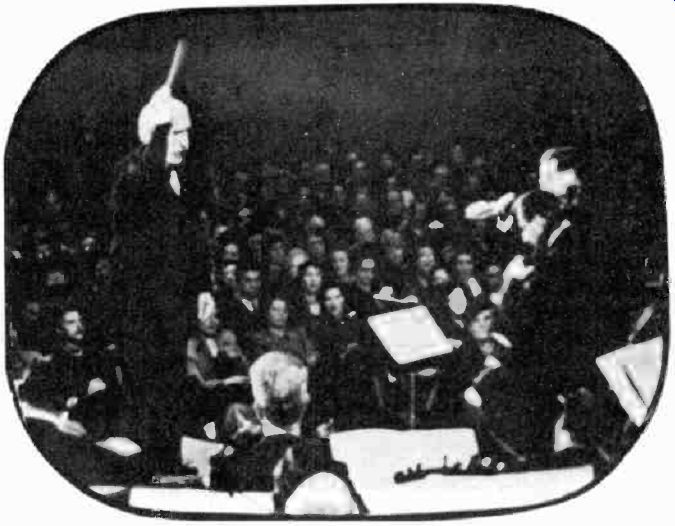
Figure 16. A long shot as
it appears on the television screen. (courtesy NBC)
.... shot is used. More of the performer's body or a part of the set is in view, but the camera is still not too far back to lose important details. The relative area covered by a medium shot is shown in Figure 15.
6-21 The Long-shot. The long-shot is normally used to establish a new scene and the performers in it. A typical long shot is shown in Figure 16. The camera covers the entire set and enables the viewer to relate the position of the performers to each other and the set. The camera cannot be left on a long shot for more than a few seconds, because the small size of the performers on the screen causes the viewer to lose interest.
In planning a wide-angle or long-shot, it is best to compose it with as little detail as possible, and with a large focal point of interest. Large, dark grey or black areas around the edges of the picture must be avoided on long-shots, because they cause the picture to flare at the edges.
Camera shots which cannot be labeled either close-ups, medium shots, or long-shots are often given combination names to denote intermediate distances. Thus, a camera shot between a close-up and medium-shot is referred to as a medium-closeup. A shot between a medium and a long-shot is called a medium-long-shot.
Full, front shots are uninteresting when used too often in television. Angle-shots, from one side or the other have proved more effective and give an increased three-dimensional effect.
6-22 The Microphone. The pick-up of the television sound is an important part of program production. In a television studio sound pick-up methods differ from those used in other types of sound studios, mainly in the manner of locating microphones and the type of equipment used. The audio part of television is comprised of all that has to do with sound, and here again skilled technicians are needed to insure a smooth performance. The proper placement of microphones has a great deal to do with the success of a production. Unlike the little boy who was told when company came that he should be seen and not heard, the microphone has to be placed in a position where it can hear all, and yet never be seen.
For programs where there is no action to follow, a permanently fixed mike may be pre-set in position to pick up all sound.
In the interview or forum type of show, fixed mikes are sometimes placed right in the picture. For shows in which there is constant movement about the set, the mike must be mobile enough to follow the action so as to maintain a constant sound level at all times. Mobile booms of the extension type shown in Figure 17 are used for this purpose. The microphone is placed in a cradle located at the end of the extension arm. The arm can be moved in any direction and can be simultaneously retracted. By using such a boom microphone, action can be followed at all times and the microphone can be kept out of the picture.
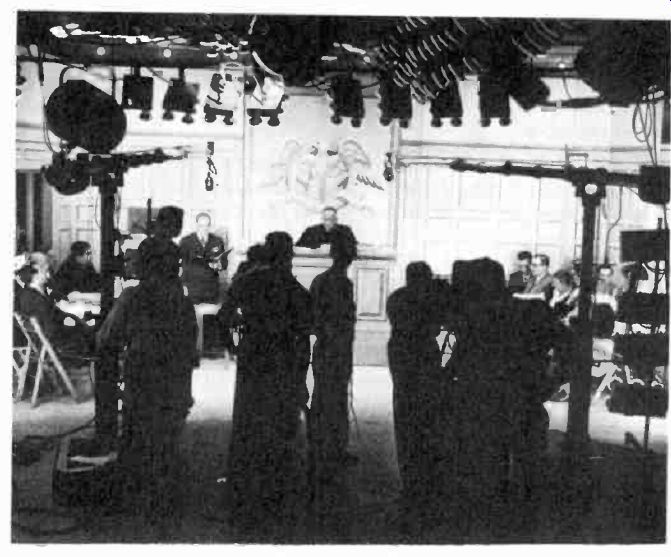
Figure 17. Microphones mounted on booms are suspended over the heads of performers.
(courtesy DuMont)
The proper distance between the mike and the sound source depends upon the type of sound. Orchestral music, for instance, can be picked up from a distance. For the normal speaking voice, on the other hand, the mike should be suspended just high enough above the speaker's head so that it is not in the range of the camera, and about eighteen inches in front of the speaker.
Two types of microphones are employed for television sound pick-up, the non-directional and the cardioid. The classification is according to the direction in which they are most sensitive to sound. The non-directional microphone, as its name implies, picks up sound equally well from all directions. It is normally used on remotes to pick up audience applause or laughter, and the noise of crowds. It is rarely used in the studio, because it responds too well to the noise made by the studio crew and equipment.
The cardioid microphone is widely used because it can be made to have several different response patterns. With one response pattern the mike is sensitive toward its front and dead toward its rear. When the microphone is directed toward the performers, it does not pick up noise made by the studio crew.
A second response pattern obtainable from a cardioid microphone has a figure eight shape. The front and rear are equally sensitive, but the sides are dead to sound. This bidirectional pattern is useful for picking up sound coming from opposite directions, such as from two actors facing one another.
6-23 The Studio Control Room. The studio control room is the first terminus of all effects, both video and audio, produced in the studio. Here the camera pictures are monitored and the sound levels adjusted before being fed to master control.
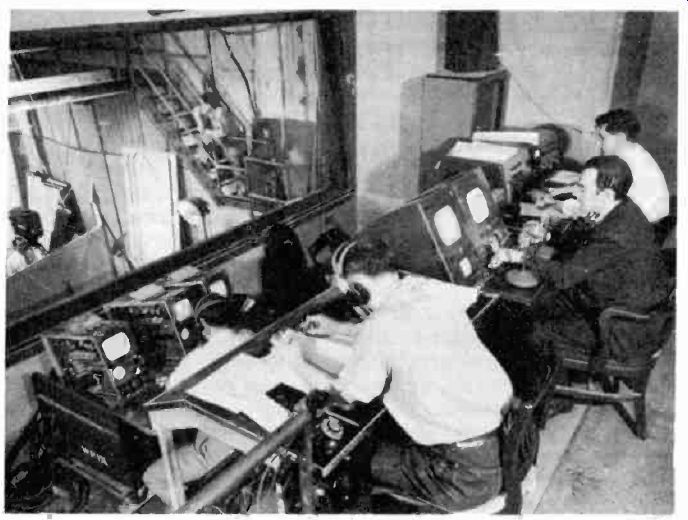
Figure 18. The studio control room. The technical director is seated before
the switching console. (courtesy WPIX) For each camera in use in the studio
there is a camera monitor in the studio control room. Accompanying each monitor
are controls which are used to shade and electronically change the contrast
of each picture before it is transmitted to master control. The technical
director uses a switching panel to shift from one camera to another, as shown
in Figure 18.
An intercom system is used by the program director to instruct the studio crew and relay orders to the actors through the stage manager. Another intercom connects the program director with master control.
Most studio control rooms have several record turntables.
The turntables are used to play recorded music into the studio or directly into the program circuit.
6-24 Control Room Personnel. The personnel in the studio control room is as follows:
1. The technical director who is in charge of switching cameras. In some studios he also relays directions from the program director to the crew on the studio floor.
2. The video engineers who are in charge of adjusting each picture electronically before the program director selects the picture to be sent out over the air.
3. The audio man who checks the levels of the sound from the microphones and operates the record turntables.
4. The program director and his assistant who guide and time the program from the script or outline, and who give cues to the crew, either through the technical director or directly over the intercom system.
6-25 The Master Control Room. The master control room is the nerve center of the television station, much as a switchboard is in a telephone system. It is here that programs from the various studios, remote pick-ups, and network stations are coordinated.
In the master control room a large switching panel permits the selection of program material from all of the station's facilities. Master control also has shading equipment to shade the pictures received from the various points before they are fed to the transmitter. The integration of the sound accompanying all pictures is carried out at master control. A typical layout of master control facilities is shown in Figure 19. To the left are the picture monitor and switching and shading controls.
The sound console may be seen to the right rear.
The film projection room is usually close to master control.
Film programs and the shading of the film pictures are the responsibility of the master control crew. If a film is to be integrated with a live show, it is readied by master control and switched into the program at the correct moment.
6-26 Master Control Personnel. The master control crew consists of the following personnel:
1. The master control supervisor who is responsible for the operation of the equipment and the activities of the master control crew. He supervises all incoming and outgoing programs and is responsible for the timing of programs so that network breaks and spot commercials are integrated at the correct time.
It is his job to direct the switching back and forth from a studio, a remote, the film room, or a network station much as the director does in the studio control room for his particular show. The master control supervisor maintains contact with the various sources of programming over an intercom system.
2. The chief sound man who is in charge of the checking of all sound before it is fed to the transmitter, and the switching of sound from one pick-up facility to another. He also operates the turntables for recorded sound used on programs which originate directly from master control.
3. There are generally two or more video engineers in master control who are responsible for the shading of the pictures and the checking of the quality and shape of the video signals.
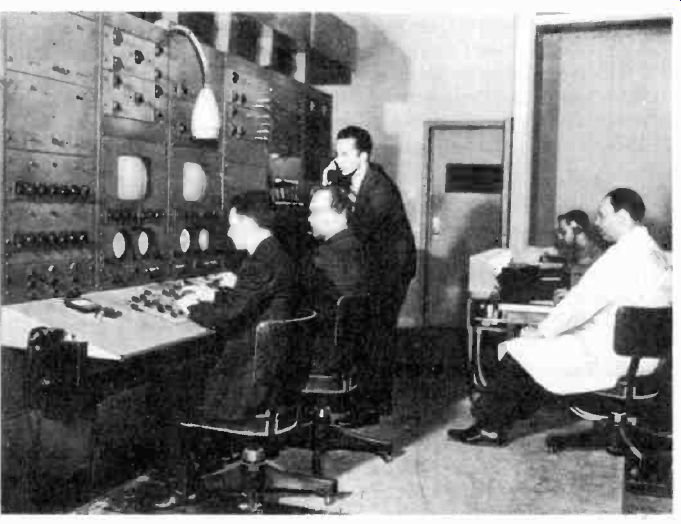
Figure 19. Master control room facilities. (courtesy DuMont).
6-27 The Projection Room. In the early days of television a large percentage of programming was devoted to films. Although stations in metropolitan areas no longer need this "crutch" to fill out their daily program schedules, film continues to play an important part in programming. With the advent of network operations through programs transcribed on film, the projection room will assume a more important role.
The projection room is equipped with specially designed film projectors which have a unique shutter arrangement to change the 24 frames per second of the motion picture film to the 30 frames per second at which television images are broadcast.
An iconoscope camera is mounted directly in front of a projector. The film is projected directly onto the iconoscope mosaic. The iconoscope is mounted on a sliding bar and can be quickly moved into position before any one of several projectors.
Four projectors are required to adequately handle different film sizes and lengths, two for 35mm film and two for 16mm film. This permits continuous projection of either size film when the picture runs for more than one reel. A slide projector is another essential piece of equipment in the projection room since many of the program titles are most easily presented on slides. A Baloptic on projector is also useful for projecting pictures, cards, newspaper ads, or small objects which have not been photographed or prepared for slide projection. Equipment for quick splicing of film and for viewing of film is also essential. Two men are needed to handle the work in the projection room, one to operate the equipment and another to maintain the film library and rent and purchase film.
The integration of film into a live program produces interesting effects and affords changes of pace in the production. Film may be used to illustrate a point brought out in a live studio program. It is also effective for superimposition with either slides or live studio action. In fact, there is no end to the possible uses of film in television programs, and no question that it will continue to remain an important factor in programming.
6-28 Transcribing Programs on Films. A recent development in television has been the perfection of a camera that photographs the image on the picture tube and simultaneously records the sound. This process is known as tele-transcribing (or sometimes kinescope recording), and is a tremendous step forward in creating a nation-wide network without the use of coaxial or microwave links. The tele-transcription method of networking permits television stations in the smaller population centers to carry top quality metropolitan programs at a cost commensurate with their operational budget. At the same time, the national advertiser is enabled to procure nation-wide coverage of all markets with his television program.
No special precautions must be taken in producing shows which are to be tele-transcribed. A program with proper lighting, makeup, scenery, and direction is just as suitable for recording on film as it is for immediate transmission.
The possibilities of this important development are manifold.
Television programs, when transcribed, maybe cut and edited.
Necessary portions may be eliminated for different markets.
Scenes may be re-shot if they are considered unsatisfactory.
PLANNING THE PROGRAM
6-29 Probably the most important rule which must be followed in planning a program is that it must be simple. A careful study of the details of the production with a view toward simplicity should be made before undertaking the mechanics of creating the program. The usual pitfall is the starting of a production which requires the use of elaborate equipment or staging and more time and money than the producer or director has available.
No matter how good the idea or how well the show is produced, if the cost of production is prohibitive, a show is useless. This is true for programs produced either for commercial or sustaining markets. Knowing the current market for a specific type of program, checking over the expenses for at least a thirteen-week period, and making certain that they will not exceed the acceptable budget, are important points which the producer and director must remember.
6-30 Scripts. Developing writers who understand the television medium and who are equipped to write directly for it is one of the greatest problems facing this new industry. At present there is a dearth of material which is suitable for television production. Until there is more money with which to lure established writers away from other fields, television scripts will continue to be mediocre. The current trend of adapting material used in other media like the theater and radio, and from short stories does not fully exploit the powers of television as a spontaneous medium, different from all others. Writing for television calls for a very special technique, a different set of rules, and an entirely new approach.
To create mood and atmosphere, the motion pictures employ such devices as mob scenes, tremendous sets, and expansive scenery. To secure similar effects, radio depends upon word pictures, together with sound and musical effects. The legitimate theater, using both visual and aural techniques, does it with a more over-all effect in mind. Audience attention is easily giving the important dialogue to a good actor. The ability to carry the play lies in the quality of the dialogue and the acting ability of the leading characters throughout the performance.
Television cannot use the lavish technique of motion pictures, the aural pictures of radio, or even the techniques of the theater, at least not to the same extent. While combining both visual and aural techniques, television places far more emphasis on the "bit player". The actor with a few lines is as prominently spotlighted during his few moments on the screen as is the leading character who carries the play. The elevation of the bit player in television is due to the extensive employment of close-up technique. Consequently, the casting of small parts requires a greater care than in any other form of entertainment. Likewise, the writing and direction of lesser characters and of small sub-plots demand scrupulous attention.
A television script should always be written for a minimum number of characters. The plot lines should be carefully woven to secure the credulity and natural quality necessary to maintain the intimacy of the medium. The dialogue is the very crux of a television show. A director is powerless to "direct around", or divert attention from weak dialogue. Scripts must be broken down into short scenes, with as much visual action as possible.
This is due again to the limited screen area and the viewer's rapid loss of interest when presented with a static scene for more than a short period.
6-31 Choosing Actors. After the director makes his choice of a script or decides upon a format for an informal ad-lib program, the next problem is to select performers who will best carry out the production. Oftentimes a good evaluation of an actor can be obtained by talking informally with him, planting the idea of the intimacy of television, warning against over-projection and over-playing, and searching for the natural personality which can later be spotlighted in performance. Sometimes an improvised, informal chat between two actors before the camera and mike will supply the director with the clue of warmth and intimacy for which he is searching. This method of selecting actors also shows up annoying mannerisms or physical characteristics which do not register well before the perceptive eye of the camera.
6-32 Acting for Television. The spontaneity of the video medium is its most outstanding characteristic. An actor who has confidence and the ability to ad lib during unforeseen technical mishaps not only appears better before the television camera, but also helps the rest of the cast and the director. The viewing public is aware that, as in the legitimate theater, the scene is actually taking place. Therefore, a personal approach and an awareness of the camera is desirable. An illusion is created which makes the viewer feel that he is actually closer to the performer than he would be in a theater. This personal contact should be exploited to the fullest extent. The performance of the actor in television is subjected to an extremely careful examination by the viewer. Slight facial expressions are exaggerated to a further degree than in any other medium.
Most radio actors develop stock characters which they can turn on and off at will. In fact, most radio shows are cast with these stock characters in mind. They are usually given no real acting direction and are on their own from the start. Radio's emphasis on voice quality and strictly audio techniques is usually a hindrance to radio performers who turn to television. They find that they must leave behind most of the tricks and shortcuts which were learned during long running parts in day-time "soap-operas". The television camera is quick to detect the insincere or "phoney". Many radio actors, of course, have had experience in stage work. Such experience is invaluable since stage techniques most closely parallel those used in television.
The photogenic motion picture actor who is familiar with the close-up technique is generally considered ideal basic acting material for television. However, even he must learn to act for television. Motion pictures are produced under conditions completely different from those of television programs. In motion pictures, cutting and editing have eliminated the need for sustained effort on the part of the actor. He learns a portion of a scene at a time. A fluff is unimportant because retakes are possible. He receives little experience in memorizing whole scripts, or even scenes. Before the television camera the actor is on his own, out of the hands of the director. He must understand pace and tempo and be fully aware that there can be no stopping because of mistakes and that the slightest slip is immediately apparent to the viewing audience.
The legitimate theater actor also comes close to fulfilling the requirements for the ideal television actor. His experience and training are invaluable. He is more flexible and usually understands the limitations of both space and time. There are, of course, things which the actor with stage experience must unlearn. He generally shows a tendency to over project and to play too broadly. If anything, he must learn to underplay. His voice must be projected to a sensitive microphone a few inches above his head, rather than to the back wall of a theater. Facial expressions must be subtle and gestures reduced in scope. The stage actor's manner of playing must be adjusted to a less obvious level. "Hammy" quality, or even a trace of "theatricalism" is in obvious bad taste on the viewer's screen. The stage actor must adjust to the confining, sometimes cramped playing areas of a television studio. He must learn that in order to maintain the close-up technique he has to play elbow to elbow with the other actors. Nor is he at liberty to express his feelings with great movements across the stage or with elaborate use of furniture or props. What movement he is allowed is mostly lateral to avoid going out of camera focus.
Actors become familiar with the techniques required of them by television only by watching a great number of television shows, either on a receiving set or as onlookers in the studio during rehearsals and performances. The public, in turn, as it watches more of this entertainment, will learn that the finished television show has had far less rehearsal than is generally supposed. It will gradually temper its criticism as it learns to appreciate more and more the excitement and originality, and the fresh "first-time" quality of the new medium.
6-33 Rehearsals. The lack of sufficient rehearsal time before the cameras is another obstacle which stands in the way of good television programming. As pointed out previously, it is not economically possible to pay the high costs of an adequate rehearsal schedule. To rehearse a full day's schedule of television programs, on the basis of the number of hours which the stage and motion pictures devote to shows, would require facilities and capital far beyond the limits which can be supported by commercial sponsorship. The average rehearsal time for commercial television programs, with present studio setups, is limited to a ratio of six to one; that is, approximately three hours of camera rehearsal time can be allotted to a half-hour program. For a sustaining program the ratio is a great deal less, approximately two to one, or one hour of rehearsal with cameras for a half-hour program.
The cost of talent during long rehearsal periods is heavy, but even this cost is small compared to the outlay for rehearsing with the station equipment. The average television program budget can afford only a few hours rehearsal with the station technicians. Because camera rehearsals at the station are so expensive, much "dry run" rehearsing of the cast is done at outside studios. The performers usually know their lines and actions thoroughly by the time the show is ready for camera rehearsal. This makes it possible to utilize camera rehearsal time to fullest advantage. A major part of the camera rehearsal is devoted to checking the lighting on the performers and scenery, and to determining the best camera angles.
Even though the most minute and scrupulous plans have been made, the director must be ready for unpredictable difficulties which occur during camera rehearsal. Technical breakdowns or deficiencies often require complete deletions of camera shots which had been planned for important effects. Often there is insufficient time to fully rehearse anew plan before air time. At television's present state of development it is not unheard of for a director and cast to arrive at a studio for rehearsal to find that a new type of camera has been installed and is only partially operative, or that a lighting expert has completely re organized the lighting setup, which of necessity changes the playing areas on the studio floor and rules out certain shots which had been planned. The new lighting may call for a different type of make-up for the cast. Or there may be a new method of switching from master control to studio control.
This change may require new techniques for integrating titles and film with the show.
Television rehearsals usually appear chaotic to the uninitiated.
For this reason, it is considered good policy to keep prospective sponsors away from rehearsals. Actually, seeming confusion prevails at most rehearsals for all entertainment media, while in present-day television it is increased by the "growing pains" of the industry.
An unfortunate aspect of the rehearsal problem is the fact that the camera rehearsal is usually scheduled for the same day as the performance. This practice is necessary because of limited studio space and the lack of extra equipment for rehearsals.
The scenery is set up in the studio for rehearsal, as close to air time as possible. As soon as the show is over, the studio space and equipment must be made ready for the rehearsing and airing of another show. This means that important changes, which are found to be necessary during the rehearsal, cannot always be made in time for the on-the-air performance. As television programming expands and relief crews and studio space are added, the practice of rehearsing programs on the day they are broadcast will undoubtedly be changed. At the present time, this practice presents a real problem to the director.
There are several things which the director can do to minimize the effects of confusion and technical difficulties during rehearsal. Some of them follow:
1. He should insist that the technical director be present at the first reading, or blocking rehearsal. At this time, the actual production can be envisioned, camera action planned, and different camera shots decided upon. If this is accomplished at the rehearsal with the full accord of the technical director, many technical difficulties will be avoided during the airing of the show.
2. If the show is built around an original script, the writer should be on hand, or available for cuts, or rewriting.
3. Well in advance of the rehearsal, the director should obtain a layout of the stage from the scenery designer. He should also consult the lighting technician as to the areas which are best illuminated for the type of action planned.
4. Constant changes in script or in direction after the preliminary rehearsal serve only to confuse the performers. It is wise and economical to eliminate all trouble spots before the rehearsal.
5. Film insertions into a live program cannot be rehearsed if the master control personnel is busy previewing film or is occupied in some other manner at the time of the performers' rehearsal. Therefore, cues in and out of film must be rehearsed at another time and the technicians involved given complete cue sheets. A good policy is to find out first what type of coordination is technically possible, and then plan the show accordingly.
All studios do not have the same facilities for integrating film with live pickup.
6-34 Details of Production. The securing of properties is a problem which must be dealt with individually by each studio.
Some studios are located in department stores and have working agreements with them whereby furniture or hand props can be borrowed for productions. This is a fortunate setup, but most studios have to make arrangements for props with furniture stores and professional property companies.
Sets which cannot be assembled from stock flats must be planned and constructed about a week before a show. A sketch is submitted to the studio art director, outlining what is required. The studio art director's advice is often invaluable in deciding the scenery colors and layout which will give the best effects with the studio cameras and lighting available.
Music is used either in live or recorded form and is an important adjunct to a program. Proper care must be given to the selection. Mood or background music can do much to heighten the effect of a scene. After the musical scores are selected, they must be cleared for commercial broadcast purposes. AH details of how the music is to be used are given to the station's program department, which secures the clearance.
If spot commercials are to be inserted into a program, effective cues must be given to the studio crew and to master control to insure smooth integration of the commercials with the program.
Television networks have certain requirements regarding length and frequency Of commercial spots.
Wardrobe problems are solved well in advance of the camera rehearsal, thereby utilizing the latter time for the more important task of planning camera shots. Costume colors must be chosen to suit the color response of the cameras. The appearance of patterns and lines in the costume materials is checked on a picture monitor before final selections are made.
The materials can be brought to the studio and checked during brief moments when camera equipment is idle.
The exact times when the program goes on and leaves the air are checked with master control. This determines the exact running time for the show. A time sheet is then prepared, breaking down the program into small sections which are timed individually. With this time breakdown, a constant check can be made during the actual production to determine whether or not the show is ahead or behind time. The performers can then be paced accordingly by relaying signals to them through the floor manager. With network breaks and spot commercials scheduled to the very second, accurate timing is a must in television programming.
A well organized production staff goes far in reducing the many problems involved in preparing a television show for the air.
The delegation of responsibility to competent people is as important in this work as in any business. Generally speaking, production staffs for television programming are reduced to skeleton size because of limited budgets. The size of the staff depends on the type of show to be produced. Sometimes several of the functions are performed by one person to reduce costs.
For example, the director often serves as the producer and writer.
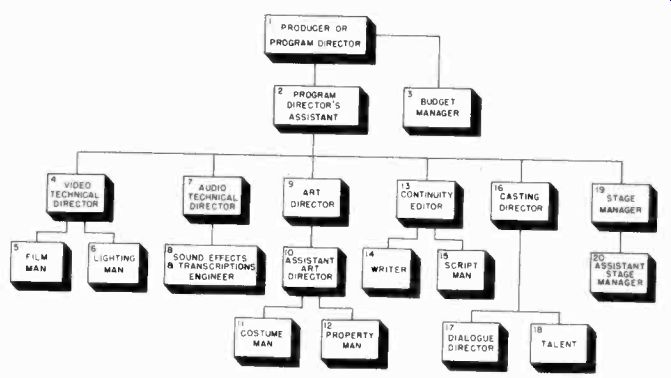
Figure 20. Organization chart of program personnel.
The breakdown of authority and duties of personnel is important. A typical working arrangement is shown in the organization chart of Figure 20. The responsibilities of each of the personnel are as follows:
1. Producer or Program Director: Responsible to the sponsor and the station for entire production. He directs production on the air.
2. Program Director's Assistant: Responsible to Program Director for carrying out Director's requests on entire production. He also directs the show in rehearsals.
3. Budget Manager: Responsible to Program Director. Determines costs of production and advises on ways to trim production costs.
4. Video Technical Director: Responsible to Program Director's Assistant and in charge of video quality.
5. Film Man: In charge of film. Is directly responsible to the Video Technical Director for cuing film into production.
6. Lighting Man: Takes orders from and makes technical suggestions to the Video Director.
7. Audio Technical Director: Responsible to Program Director's Assistant and in charge of audio quality.
8. Sound Effects and Transcriptions Engineer: Responsible to Audio Director for technical problems involved in sound and music other than dialogue or microphone pickups.
9. Art Director: Responsible to Program Director's Assistant and in charge of design and execution of all art work.
10. Assistant Art Director: Responsible to Art Director. Duties are to assist in art work details and costs.
11. Costume Man: Responsible to Assistant Art Director. Secures costumes.
12. Property Man: Responsible to Assistant Art Director. Se cures Properties.
13. Continuity Editor: Responsible to Program Director's Assistant. Checks scripts and times dialogue. Responsible for overall timing of production.
14. Writer: Responsible to Continuity Editor. Writes story and dialogue.
15. Script Man: Responsible to Continuity Editor. Duties are typing and delivering of scripts to Continuity Editor.
16. Casting Director: Responsible to Program Director's Assistant for obtaining actors and their understudies.
17. Dialogue Director: Responsible to Casting Director for dialects and interpretation of roles as well as voice modulation.
18. Talent: Responsible to Casting Director.
19. Stage Manager: Responsible to Program Director's Assistant for handling of all properties, scenery, calls, etc. during production.
20. Assistant Stage Manager: Responsible to Stage Manager.
Checks all properties before telecast.
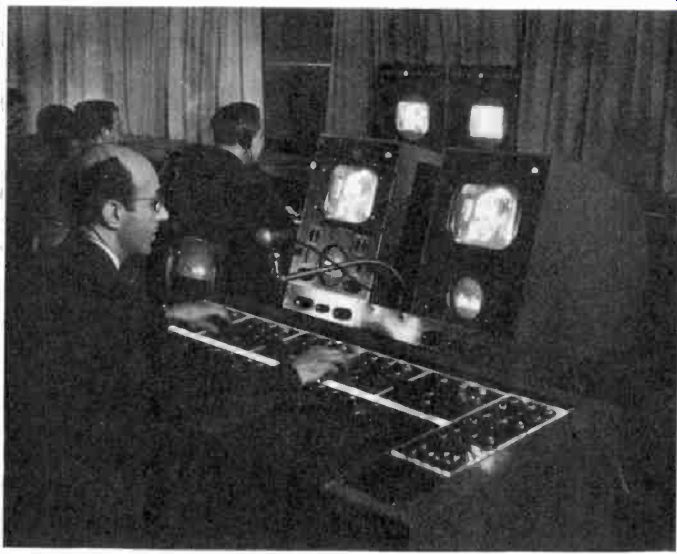
Figure 21. The technical director operates the switching panel and selects
the desired camera. (courtesy NBC)
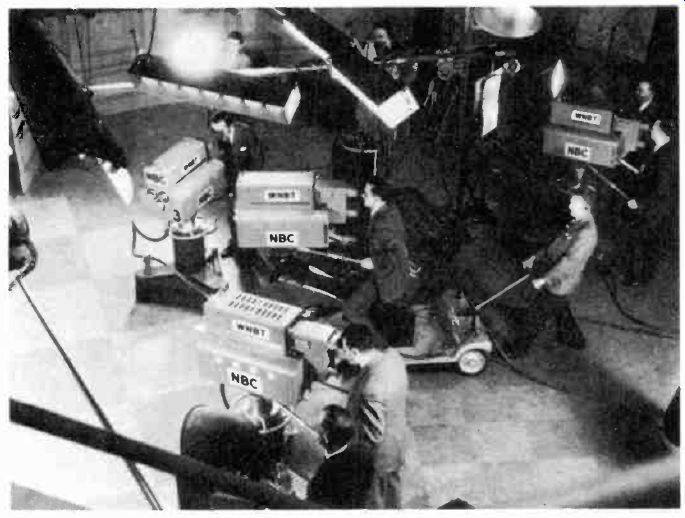
Figure 22. Studio crew in action. Note the camera at the right focused on
the title board. (courtesy NBC).
6-35 The Program Director and His Job. The program director, or simply director, is in charge of the entire television program. His duties begin with the choosing of a script which is best suited to the format of the show. The best script is usually one that has been written especially for television rather than adapted from another form. Since such a script is not always available, the director must compromise on the quality of the script, and depend upon his own ingenuity to adapt it to the medium.
The director's next concern is the planning of camera action so as to catch each movement in the most interesting way. In blocking out the physical movement of the cast, he must constantly think in terms of camera shots. He must also take into account the position of the mike boom so that all sound is properly picked up in true perspective with the picture.
Transitions from one scene to another present certain problems, for there are no curtain falls to bridge the gap. Fadeouts, dissolves, and clips must be used to best advantage. The director must coordinate the stage action and the camera work so that there is a picture on the air at all times. A blank screen, even momentarily, is annoying to the viewer. The studio action must be coordinated with master control if film is to be integrated with the program. The director is responsible for the timing of the program on the air and cuing of studio and master control crews. A detailed cue sheet prepared by the director when first planning the show enables him to practice timing during rehearsal and to achieve precision timing on the air.
The director must not burden the actors to any great extent with camera angles, beyond making them aware of camera locations and which camera will be taking the close-up shots.
There are, of course, times when an exact position on the set must be assumed by the performer in order to obtain a particular camera effect. In such cases, chalk marks are used on the floor to help both actor and cameraman.
The director must not only direct a cast of his own choosing but also the technical crew furnished by the station. Mistakes on anyone's part are his responsibility. The good director is one who trains both cast and crew to minimize mistakes.
6-36 The Technical Director. The technical director is the contact man between director and crew. He is personally responsible for what happens on the studio floor. In most studios, the technical director relays the orders of the director to the crew. This is necessary because there are many directors who are not connected with the station and who are not familiar with the equipment or operating techniques of the crew. It has been found more practical to feed all directions from the director to the crew through the technical director. The main disadvantage to this repetition of orders is that it often results in a time lag between calling for an effect and carrying it out. This shortcoming can be minimized by a good director during the running of a show by preparing each camera a few seconds in advance of switching it on the air. Relaying of orders will probably be eliminated when each studio employs full staffs of directors who can be assigned to all productions of the studio.
The technical director must be ready for any emergency that arises during a production. Usually an additional camera is kept available, should one of the regular ones break down. It is the technical director's job to get the spare camera swung into position and ready for action as quickly as possible. The technical director does the actual switching from one camera to another and coordinates the operation of master control with studio control. He and the director work in close cooperation since each contributes to the direction of the production. In Figure 21 the technical director is shown at the switching console, relaying orders over a microphone to the studio crew. The studio crew is shown in action in Figure 22.
A TYPICAL TELEVISION SHOW
6-37 In order to demonstrate how the programming techniques described up to this point are actually put to use in creating a typical television show, the planning, rehearsing, and production procedures for a live studio show and a remote pick-up are outlined in the following paragraphs.
8-38 "Photographic Horizons" A Live Studio Show. "Photographic Horizons" is a weekly half-hour show which concerns itself with the many aspects of photography. It is intended for the large number of people who are camera fans, either as amateurs or as potential commercial photographers. Since the television audience demands entertainment as well as instruction, a compromise must be reached between the two. Many camera addicts would like to know the temperature of developer baths or the lens opening and shutter speeds used to take the pictures which are shown during the program. The majority of the viewers prefer to overlook such technical information and learn the entertainment aspects of photography. The format is so planned that instruction is mixed with the lighter material. A pretty girl is always in the scene, and strong, arresting pictures are shown, intermixed with plenty of live action and amusing situations. A typical scene from "Photographic Horizons" is shown in Figure 23.
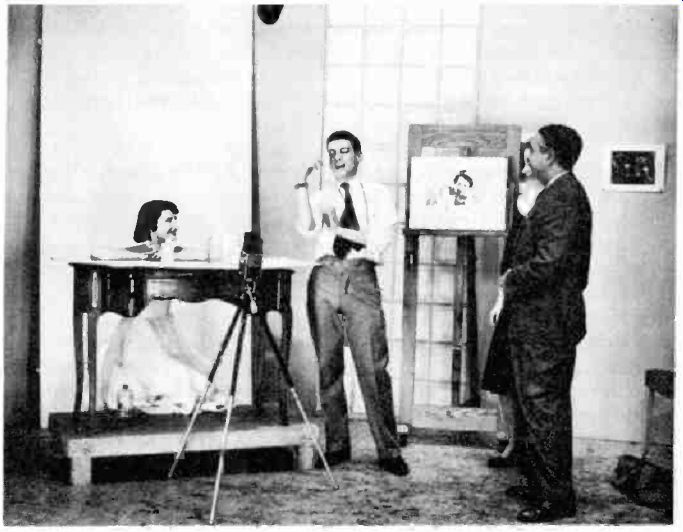
Figure 23. A scene from "Photographic Horizons". (courtesy DuMont)
Heading the show is a top news photographer, whose experience, taste, and showmanship, as well as his knowledge of all aspects of photography equip him for the job. He is aided by an attractive female assistant. A loosely defined format is used, the show being split into two sections, each approximately fifteen minutes long. The first half may contain the news photographer's selection of the best news pictures which appeared in the daily papers during the previous week. These pictures are shown on an easel, with the photographer discussing their value. Often a brief comment on some aid or trick for better picture making is made at this point, and the photographer accompanies the suggestion with a sketch on a drawing board. Or perhaps the news photographers responsible for the selected pictures of the week make a brief appearance, explaining the stories behind the taking of the pictures. The first part of the program also features the activities of a large Camera Club of the Air which has several thousand members. At times a member visiting the studio is welcomed on the program.
Photography contests are discussed and winning pictures shown. A feature of the show is a contest for the best picture taken off the viewer's screen.
After discussing the above business, a guest is featured in the final fifteen minutes of the program. The guest is usually a prominent photographer who discusses interesting aspects of his work and shows representative samples of his best pictures.
The guest photographer may be from the field of fashion, news, commercial photography, crime photography, animal photography, or any phase which will provide instructive entertainment for the amateur viewer. During this portion of the show, the permanent head photographer sits down with his guest to discuss the latter's pictures which are shown on an easel. Every attempt is made to avoid the usual "radio interview" by breaking up the discussion with the showing of close-ups of interesting pictures. At some point during the second half of the program, the contest picture of the week, which is to be photographed from the viewer's screen, is posed. Sufficient time is allowed for the amateur working in his home to focus his camera and get the shot.
In order to surround the two main portions of the show with entertainment appeal, a simple device is used. A pretty assistant acts as a "frame" for the show, and opens and closes the half hour with a personalized, intimate talk with the audience. This device succeeds in making the show appear like an informal, chatty meeting of a small Camera Club, and provides a direct and intimate contact with the viewer. The opening and closing titles are worked in with the assistant's dialogue. These titles are shown on a roller. Appropriate film is sometimes superimposed or dissolved in with the titles.
With the understanding of the format of the show, "Photographic Horizons", let us examine the details of production which are carried out in order to put the program on the air.
The permanent, or host photographer, is first consulted for suggestions on guests who are top names in their fields, and who will prove interesting, relaxed, and personable performers.
The suggested guests are contacted and available dates discussed. Appointments are made to go through their collections of prints in order to select pictures which will illustrate their stories well on television. An attempt is made to secure a variety of photographers from week to week. A commercial photographer, say, is followed by a magazine illustrator, who in turn is followed by a fashion photographer, and so forth.
Having arranged for the guest spot, attention is given to the many details of production. All pictures used on the show are blown up to sizes which can be picked up by the camera (usually 11" x 14" for horizontal prints, 14" x 17" for vertical prints). The pictures are mounted on stiff boards to prevent their curling under the hot studio lights. Pictures with non-glossy or mat finishes are used to avoid reflections from the lights. Black and white pictures with bold, massive objects in the foreground show best over the television system and are used whenever possible.
Appropriate music is selected and cleared for use on the air.
This music provides musical backgrounds or bridging between scenes. Props are listed and collected. Guests are contacted and given the rehearsal hours, suggestions as to clothing, and recommendations for make-up. Often a model is provided for demonstration purposes in connection with the featured guest's appearance. Because of the limited time allowed for actual camera rehearsal, as much preparation as possible is done in advance by conferring with the performers in person or via telephone, and blocking out the points to be covered.
"Photographic Horizons" is mainly an ad lib program. However, a strict adherence to a time schedule is necessary to assure coverage of all activity planned. For this reason, a script is prepared in outline form. First, the narrator's material is written. This includes the announcement of the show, the names of guests to appear, mention of current contests, etc. Then a careful video and audio plot is prepared in script form and copies given to the local and master control studios so that film, sound, music, slides, and camera action are properly coordinated.
This type of planning is highly important in a show where film, coming from master control, is inserted into the middle of a live show originating in the studio.
Exact timings are indicated on the script for each segment of the show. Once on the air, the director may choose to exceed the time limit at one point and borrow from the next, but to achieve a well-rounded production, he tries to stay as close as possible to the original timing. To assure that the program will get off the air on time, safety spots are inserted wherever possible. These take the form of cuing on the female assistant to speed up the action and move onto the next point. The female assistant helps to pace performers who are new to television and who often miss signals from the stage manager. The assistant is one of many devices which may be employed on this type of program as a subtle and effective means of keeping the show on schedule.
A sample script for the particular "Photographic Horizons" show described in this section is presented below to illustrate the form used to lay out the audio and video directions and dialogue, and the methods for showing the details of timing and cuing of the performers and equipment facilities. The script is divided into three sections. The first section is an outline of the show, divided into nine parts. The timing for each part is shown at the very beginning. The second section of the script is the narrator's dialogue. This is the only dialogue which is formally prepared, the rest of the show being ad-libbed. The third section of the script is the master control sheet which gives this group the cuing times for various facilities.
-----------
Section 1
PHOTOGRAPHIC HORIZONS
DIRECTOR: Bob Loewi
ASSISTANT: John Ireys
CAST: TIMING:
Peggy Corday
Part 1
1:00 minutes Okie Dokie
Part 2
1:30 minutes Joe Costa
Part 3
2:00 minutes Ed Carroll
Part 4
4:00 minutes Lisa Larsen
Part 5
11:30 minutes
Part 6
5:00 minutes
Part 7
2:00 minutes
Part 8
1:00 minutes
Part 9
0:45 minutes
VIDEO AUDIO
Part 1. Slides and film Fanfare.
montage. Music.
Narration.
Part 2. Outer Office. Peggy opening.
Okie Dokie puppet.
Part 3. Inner Office. Joe Costa and Pix.
Part 4. Inner Office. Peggy on.
Video snapshot.
Rules of Contest.
Ed Carroll build-up.
Part 5. Outer Office. Carroll Explanation and 4 pix.
Peggy-Introduce Lisa Larsen.
Part 6. Inner Office. Lisa Larsen, Joe Costa, and Pix.
Part 7. Inner Office. Peggy on for video snapshot, and Costa final word.
Part 8. Door. Peggy close.
Part 9. Titles. Music.
------------
Section II
Narrator's Dialogue: Good evening, shutterbugs. Welcome again to the informal program ... Photographic Horizons ... featuring another session of the camera club.
Become a member of our camera club ... the first of its kind on television Join the ranks of members who are learning about photography by watching these programs. All you must do to receive your membership card is write us: Photographic Horizons, care of the station to which you are tuned.
As a special feature tonight we present our guest photographer
Lisa Larsen ... journalist photographer, best known for her frequent picture stories in Life magazine.
Watch for the television award-winning pictures in the snapshot contest. Shutterbugs. Get your camera and prepare to take a video snapshot off your television screen.
And now, let's look to our ... Photographic Horizons.
Section III
Master Control Sheet
VIDEO AUDIO
1. Lica slide 5 seconds Fanfare (Studio A)
2. Lica slide (Photographic Horizons)
Music (Studio A) Narrator (Studio A)
3. Film (16mm montage) all way in for slide change.
Film 50/50 with slides.
Camera Club slide.
Joe Costa slide.
Producer, director slide.
Last slide in full, film out.
Dissolve to studio.
Music(Studio A)
4. Studio A (Approx. 12 min.) Studio A.
5. 16mm film (tele-transcription) (approx. 5 min.)
1. Sound track on film.
2. Fade out sound on cue.
3. Narration from studio.
6. Studio A (approx. 15 min.) Studio A.
7. Clip to lica slide (Photographic Horizons). Dissolve film (16mm montage) in 50/50, then all way in. Change to Assistant Director slide. Film in 50/50, then all way in.
Network slide.
Music (Studio A)
----------------
END OF SHOW
6-39 Since "Photographic Horizons" is tele-transcribed for distribution to other stations in a network, anything which would quickly date the program must be eliminated. Contests which are limited to a certain area, or to a given time, must be edited out of the tele-transcription before it is sent to other stations.
By careful preparation of the original script and proper editing, the program material may be confined to that which will be of interest many months later when presented over a television station hundred of miles away. The simplest way to cut out material of a current nature or with a fixed time element is to group it into one portion of the program so that it can all be cut out together. Commercials for sponsors in a local area are also inserted at this point and are cut out when the film is sent to another station. The network station, in turn, may insert other spot commercials at this point in the program.
6-40 Putting the Show on the Air. Now the program "Photographic Horizons" is ready for broadcast. Last minute checks of the props on the studio floor are made. Voice levels are tested on the microphones. Make-up and lighting are checked on the studio monitors. In the studio control room the program director reviews again with the technical director the sequence of camera action. The pictures on the camera monitors are examined to make certain that the video engineer has adjusted the signal levels and shading for the best effect. A last minute check is made with the audio man to be sure he has all the sound effect records and musical recordings ready and in proper sequence. Master control is contacted on the intercom system and cuing signals for film and slides reviewed. The program is then ready to go.
Let us examine, in detail, what takes place while the program is on the air. The following step by step procedure will give the reader some appreciation of the careful planning necessary to create a successful program.
1. As soon as the station break is completed, the director calls for "Fanfare" from the sound and video men. Music comes up from a transcription on the turntable. As it begins the slide "Presenting" is transmitted on the video.
2. One second before the eight-second fanfare is over, the director calls to the floor manager to "Cue Narrator."
3. As the narrator starts to speak, the director orders Master Control to "Roll Film" and "Change Slide". Upon this direction the film projectionist starts the film montage, and after approximately a five-second lapse, this film is dissolved in 50/50 with the second slide, which is the title slide of the program, "Photographic Horizons". The result is a superimposition of the film and the slide as a double exposure. At this point theme music is brought in softly by the video man in Studio Control, and remains for the rest of the narration. The film is then brought up to full contrast as the slide is faded out to permit changing to another slide. This is done to avoid the amateurish effect produced by changing slides on the air. When the next slide is ready, the film is brought back to a 50/50 superimposition with the slide. The slides are changed at a speed which coincides with the narration.
4. As the narrator concludes his script, the final slide is brought in full and the film montage faded out. Theme music is brought up full as the direction is given to Master Control to "Fade Down Slide, and Fade out Studio." Simultaneously, the studio floor manager is given the direction to "Cue Peggy." As the technical director fades the studio camera up, a close-up shot of Peggy, the mistress of ceremonies, is shown. She welcomes the television audience to another meeting of the Camera Club. Peggy stands in front of a desk, with a background which suggests a photographer's waiting room or outer office. Several pieces of photographic equipment, placed on the set serve to establish the subject matter of the program. As she begins to speak, the theme music is faded out slowly.
The two cameras with which the program is televised are focused on Peggy for her opening announcements, which include the presentation of a club member or a model who will serve later on in the show. One camera is set for a medium-long shot, while the other is adjusted for close-ups. The medium long shot camera sets the opening segment of the show and is followed by close-ups of the performers. The opening usually lasts no longer than two minutes.
5. At least 30 seconds before the end of the introduction, the long shot camera takes over, and the director orders the other camera moved to another set where the chief personality of the show, Joe Costa, is seated behind a desk. If the opening spot is running over its allotted time, the director tells the stage manager via the intercom system to "Cue Peggy to wind up." This direction is given by the stage manager with a winding circular motion of the finger, and tells the performers to finish the topic in thirty seconds. If it is necessary to cut off immediately and proceed into the next spot, a cue is given with a sliding motion of the finger across the throat. Peggy leads into the next part of the show by pointing to a door at her right, on which is painted "Joe Costa's Photo Room".
6. The director now cues in a musical selection from the studio control room turntable. The camera remaining on Peggy pans slowly to the door, creating the illusion that the camera is about to go through the door.
7. As the camera dollies toward the door and focuses in close up on the sign "Joe Costa's Photo Room", the stage manager is ordered to "Cue Joe Costa". The technical director then dissolves from the close-up camera to the medium-long-shot camera as Costa begins to speak. The transition music is taken out slowly.
8. During Costa's opening remarks, an easel with several pictures stacked one upon the other is quickly set up in view of Costa, but out of camera range. The close-up camera which had panned to the door at the end of the previous scene is brought over and positioned for a close-up shot of the easel. As soon as this camera is properly positioned, Costa is free to begin the discussion of the news pictures which he has selected for the program.
9. As Costa speaks of the first picture in the sequence, the direction is given to clip from the medium-long-shot of Costa to a close-up of the first picture on the easel. This shot is retained for 10 to 20 seconds, depending upon the interest in the picture, and the story behind it. As Costa winds up his remarks on the first picture, the technical director is cued to clip back to the medium-long-shot camera. This allows time for a stage hand to change the picture on the easel, and for the cameraman to get it properly into focus. The procedure is repeated for as many times as there are pictures to be shown.
10. When the news pictures have been shown, Costa calls for his assistant, Peggy Corday, who alternates with him in making various announcements. These include showing the winning pictures of current contests and the prizes which are to be awarded. Future contests and photographic trips are discussed.
11. Now the close-up camera is directed back to the easel, while the medium-long-shot camera is clipped on to show Peggy and Costa. At this point a series of pictures, usually taken by amateurs, is shown on the easel. They may be the winning pictures of the Metropolitan Camera Club Council, or the snapshot awards of a daily newspaper. Some data on how the pictures were taken is supplied, and comments, and criticisms are made by Costa.
12. The director then cues Peggy to get ready for the feature guest. The close-up camera is released at this point and moves back to another set to focus on the guest. Meanwhile, the medium-long-shot camera takes over.
13. As Peggy speaks the cue line, "And now let's go over and meet Lisa Larsen", the director tells the technical director to set his controls for dissolve, and cues in the transition music once more. The guest photographer is usually discovered in the midst of a visual demonstration, either posing his model or setting up his camera. The "dissolve" cue is given, and the picture changes to the close-up camera on the guest. Sometimes this shot is a close-up on the face of the model, or on a piece of photographic equipment, and then the camera dollies back for a long-shot. Joe Costa is then shown making his entrance and greeting the guest. Costa and the guest take their seats on a sofa placed nearby. As they begin to talk the music is faded out slowly.
14. The medium-long-shot camera is switched on and the other camera brought over to an easel which is placed so that the two people on the sofa can see it. The pictures which the guest will discuss are set up on this easel and the close-up camera focused on the first picture.
15. After preliminary discussion of Lisa Larsen's work, the conversation leads into a discussion of the pictures themselves.
They are shown and commented on in the same manner that Costa's pictures were presented at the beginning of the show.
The television viewer never sees the pictures being changed because the director clips from the close-up camera on the easel to the medium-long shot camera on the performers during each change. This type of clipping creates a greater feeling of movement and gets away from the static interview.
16. "Photographic Horizons" features a weekly contest in which the guest photographer poses either Peggy or a guest model. The viewers are then told to get their cameras set, and, on a signal, to snap pictures of their television screens. The best "off-the-screen-pictures" submitted are given prizes.
At exactly 34 minutes before the program is to be off the air, Peggy is cued on to start the contest. She speaks of the video snapshot to be set up, and asks the guest photographer to pose the model. The model holds her pose before the close-up camera for eight seconds to allow sufficient time for last minute refocusing and changing of film.
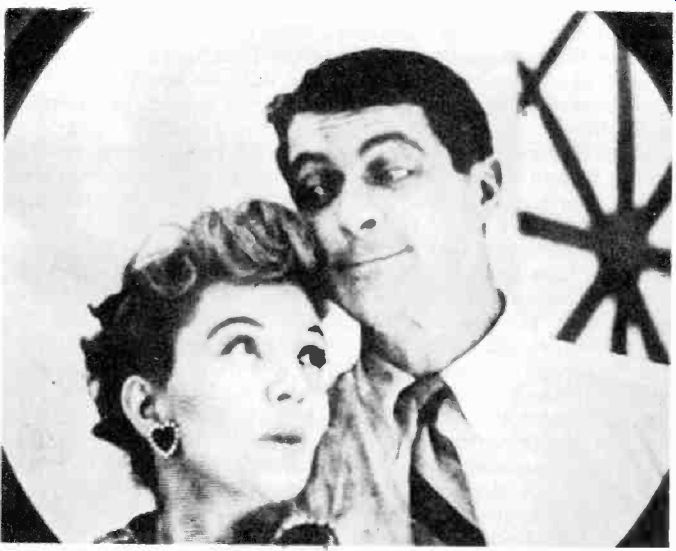
Figure 24. A typical prize winning "oil the screen" photograph.
(courtesy DuMont)
Following this action, the winning "video snapshot" from the show two weeks previous is shown, and the winner's name announced. As soon as this is done, the close-up camera leaves the easel and pans to catch close-ups of the prizes, (usually various sponsors' products) shown by Peggy at the desk with Costa. Commercials which would be out of place in a teletranscription of the program are inserted at this point so that they can be edited out when the program is shown on other stations.
17. As soon as the commercials are completed, Peggy thanks the guest for appearing on the show and asks Joe Costa to close the camera club meeting with a final word of advice to the members. From this point on the timing must be accurately determined down to the second in order to assure getting off the air on schedule.
18. The close-up camera which has been focused on the prizes is now released and is quickly positioned to focus on Peggy. The other camera, which is on a medium-long-shot of Peggy, Costa, and the guest, dollies in slowly, cutting out Peggy and the guest, and stops on a close-up of Costa making his final remarks. If the time is running over at this point, the director orders the stage manager to give Costa a wind-up signal. If the program is running ahead of time, Costa is given a "stretch" cue, which consists of drawing the hands away from one another. Since this program is ad-libbed, it is necessary that the participants have the ability to lengthen or shorten their remarks at a moment's notice.
19. The video controls are set for dissolve; and as Costa says, "Peggy, will you close the meeting for tonight?", the director cues Peggy to begin speaking, and at the same time calls for the dissolve from one camera to another.
20. The close-up camera stays on Peggy as she sums up the meeting and tells about the guests who are to appear the following week. Here again, the stage manager will give either a "stretch" or "wind-up" cue, depending on how the time is running.
21. The other camera, which had been on Costa for his final ,remarks, is now released to get ready for the next program in the studio.
22. As Peggy signs off, the director cues Master Control to "Roll Film." The camera on Peggy dissolves into film. He simultaneously cues the audio man in Studio Control to bring in the music. Master Control is then directed to bring up a 50/50 superimposition of the film and the closing slide, "Photographic Horizons". 23. After a few seconds the slide is faded out and the film brought all the way through to allow for a change in slide. The second slide, a credit for the assistant director, is then brought up for another 50/50 superimposition.
24. The film is then brought all the way through a second time with the theme music full up for five seconds. Five seconds before the end of airtime, the film is dissolved into a slide identifying the network. This allows Master Control time to clip to the station break slide on the split second and bring in the next program on schedule.
This step-by-step description of the procedure followed during a typical half-hour television show illustrates the working of the personnel and equipment in a live program pick-up from the studio.
REMOTE PICK-UP PROGRAMS
6-41 On-the-spot television broadcasts are called remote pickups. They represent an important part of programming, and in many cases best illustrate the superiority of television to any other form of entertainment as a spontaneous medium. A remote may originate from such places as an armory, a city street, a hotel dining room, a swimming pool, a night club, etc.
To cover events from these remote points, special portable cameras, monitors, sync generators, and power supplies are necessary. This equipment is conveyed to the pick-up point by a specially equipped mobile truck in which a small, local studio is set up. The mobile truck also contains facilities for relaying the program to the station.
Remote pick-ups present several technical problems which are not encountered in planning and producing a studio program.
First, there is the problem of power. For a two camera, portable pick-up chain, 5000 watts of alternating current are required. This may not seem to be an overwhelming amount of power, but in many areas the only power available is direct current. Special equipment must be brought along under such circumstances to invert the DC to AC. Even when alternating current is available, there is the problem of obtaining enough power, for 5000watts cannot be drawn from the ordinary outlet. Usually, power is obtained directly from the power line of a building near the pick-up point.
Once the problem of power has been solved, permits must be secured for outdoor pick-ups in order to park the truck on the street and lay the equipment cables across the sidewalk. Oftentimes this permit cannot be obtained from the police and the cameras must be set up in an elevated window or on the roof of a building.
A particular headache to the remote crew is the ever changing light on outdoor pick-ups. This change of light occurs as cloud conditions vary or the sun does down. Light changes must be quickly compensated for by the video engineers.
Despite these difficulties, on-the-spot television coverage has become a most interesting form of programming. Consider for a moment its effect on news reporting. During the 1948 political conventions in Philadelphia, the full possibilities of on-the-spot news reporting via television were fully realized.
It is estimated that nearly ten million people along the eastern seaboard had a ringside view of the proceedings and watched history in the making. This remote pick-up created a new and extremely honest kind of reporting. No longer could reporters dash off brilliant paragraphs describing the enthusiastic demonstrations given a particular candidate, when the television viewers were "there" to note the lethargic attitude of the gallery. So thoroughly did the television industry cover this event that viewers in their homes often knew what was going on long before some of the delegates.
Until recently, sporting events dominated the remote television programs. As greater facility was achieved in handling remote equipment, other types of programs were covered. Today, remote pick-up brings to the television audience a wide variety of entertainment including sports, fashion shows, parades, art exhibits, historic dedications, and conventions, to mention only a few. The possibilities of remotes are almost limitless.
Wherever news is in the making, the audience wants to see it.
The television remote affords the viewer that opportunity.
6-42 Typical Remote. Let us consider atypical remote pickup to understand the planning and operation of this type of program. Consider the covering of the 1948 Easter Parade on Fifth Avenue in New York.
1. First, the program idea is submitted to the Program Department so that time and announcers are allotted to the broadcast. The chief engineer and operations manager are notified of the intended broadcast to make certain that a portable camera chain will be available.
2. Having cleared the program thus far, the city department in charge of licensing such operations is contacted and a permit obtained to operate on the street. For a parade where there are marching units in definite formation, it is necessary to confer with the manager of the parade so as to forewarn the cameraman of interesting formations which should be picked up.
Because of the nature of the Easter parade, this is not necessary.
3. At this point, the Remote Engineer and the Remote Manager make a survey of suitable locations for the placement of the equipment used in televising the parade. This involves a rough blocking out of camera positions, location of power lines, and the finding of convenient spots for the mobile truck. Finally, the method of relaying the program to the station master control room is determined. U aline of sight exists from the point of pick-up to the station, radio relay equipment is used. When line of sight transmission is not possible, arrangements are made with the telephone company to provide a telephone line to the station. All of these factors are checked before it is definitely established that the remote pick-up is possible.
4. On the day of the parade, the truck is positioned directly in front of " Saks 5th Avenue", with the truck parallel to the curb in front of the main entrance on Fifth Avenue as shown in Figure 25. Power for the equipment is tapped from an outlet on the second story of the store and fed directly to the truck.
5. The micro-wave relay transmitter is placed on top of the store and is aimed directly at the receiving antenna in the transmitter several blocks away.
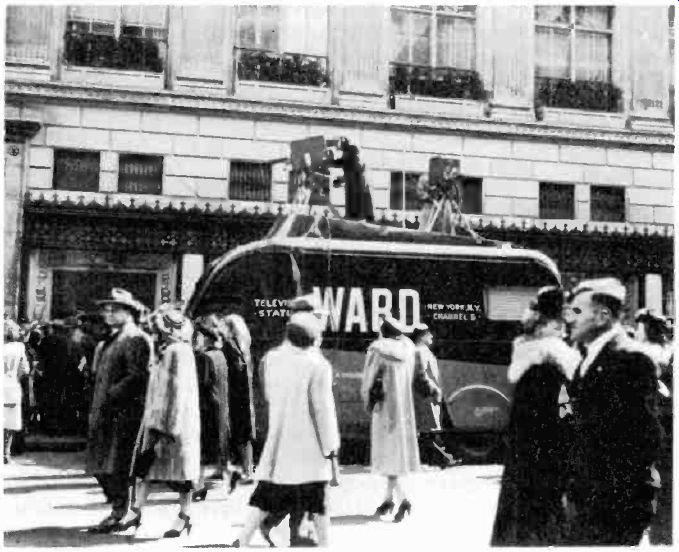
Figure 25. Remote pickup truck and crew in action. (courtesy DuMont)
6. The cameras are set upon top of the truck with the viewing monitors and switching equipment inside. The program is directed from this latter point. All equipment is in place and checked several hours before the broadcast.
7. The Program Department furnishes the announcer as well as script material, and suggests a format for personal interviews throughout the morning of the parade. A few of the interviews are planned in advance to provide variety and highlights for the program. Noted personalities are contacted so that they "happen" to appear in the parade at the proper time.
An announcer with a portable microphone mingles with the crowds. He is attired in a top hat and conspicuous dress so that he can easily be picked out in the crowd by the camera.
8. The technical director is given a complete script and plan of operation. Reception by the station transmitter is checked, and the Easter Parade is on.
Here then is a resume in outline form for preparing a remote broadcast:
1. Submit plan to Program Department.
2. Notify Chief Engineer and Operations Manager.
3. Arrange contact with proper official in charge of event.
4. Arrange survey with Remote Engineer and Manager for
a. Choice of location for equipment.
b. Choice of camera positions and truck location.
c. Check availability of ac power.
d. Check relay link (microwave relay or telephone line).
5. Secure permits and permissions.
a. Permits.
1. Street permit for truck and string of wires.
2. Electrical permit for a-c power.
b. Permissions (variable).
1. For location of micro-wave transmitter.
6. Production work.
a. Time of program and time of event.
b. Announcer and script.
c. Check production equipment.
1. Off air monitor.
2. Mikes.
3. Lenses.
7. Check script and plan of program with technical director.
The foregoing description of a typical remote program illustrates some of the production problems involved and how they differ from studio programming.
TYPES OF SHOWS
6-43 Television stations at present are offering between 28 and 40 hours of programming each week. A few have even begun operations throughout the entire day. Once a television station arrives at the stage where it is in full commercial operation, it is required to maintain at least two hours of programming each day of the week, with a total of not less than 28 hours for the entire week.
Selecting a properly balanced program schedule which will interest the largest number of viewers is a subject too vast to discuss in great length in this section. However, it is well to ...
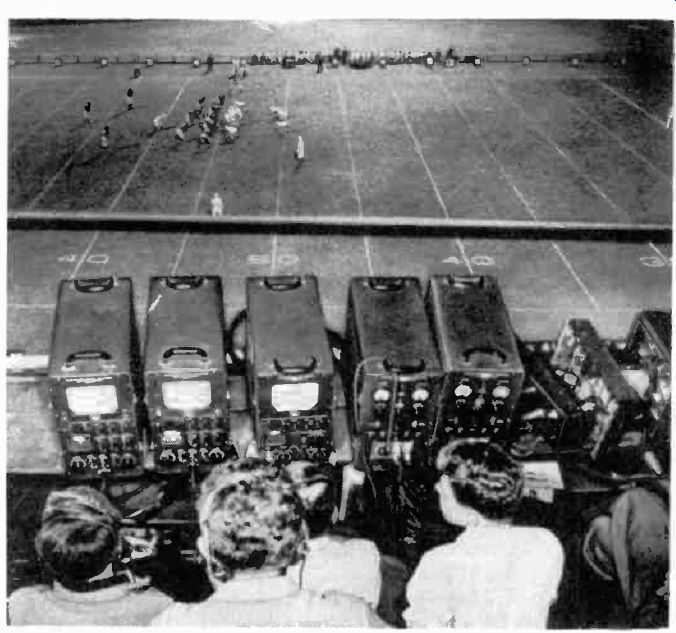
Figure 26. Televising a football game. (courtesy
DuMont)
... outline some of the type of shows which are proving of interest to television viewers today.
6-44 Sports. The coverage of sporting events has-been a natural for television ever since the remote pick-up was developed.
Baseball games draw large television audiences, whether they are played in the afternoon or at night. Baseball is more difficult to follow with the television camera than most other sports because the action shifts quickly. Football is another television natural. With the remote pickup near the 50 yard line (Figure 26), the viewer gets the equivalent of the best seat in the stadium.
The telephoto lens gives him a better close-up view of the plays than a person present at the game sees.
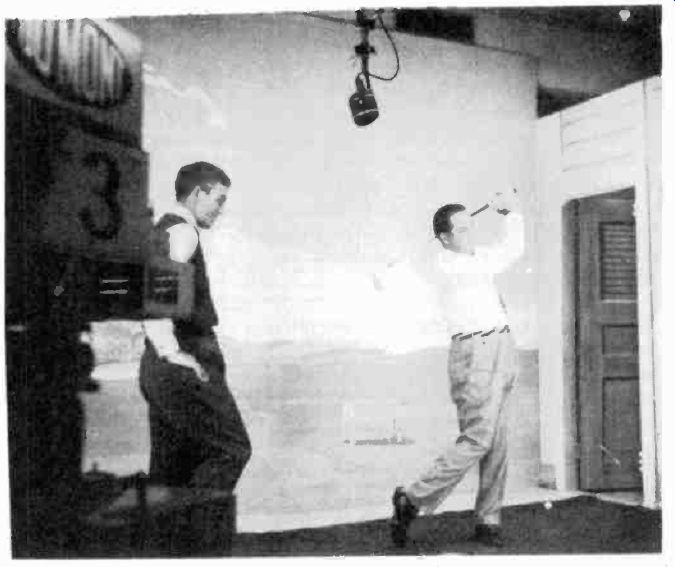
Figure 27. An "in the studio" sports show. (courtesy DuMont)
Indoor events such as wrestling and boxing matches are programmed regularly and are usually scheduled later in the evening after studio programs are over. Horse-racing, auto-racing, golf tournaments, tennis matches, and bowling tournaments, all lend themselves to television broadcasting.
Sports have dominated television programming to date because they constitute a ready-made production with a well-established box-office appeal. A variation of the remote sports program which has proved popular is the instructive sports show which originates from the studio. Golf instructions are given on the program shown in Figure 27.
6-45 News. News telecasts take several forms. On the spot coverage, such as the political conventions discussed previously, is one method of presenting the news. With this kind of program, the viewer gets the entire picture, unedited by interpretive reporters. Consider how much more effective this type of reporting is than the newsreels which give only brief segments of news events several days after they take place.
When news-worthy events occur at inconvenient hours for programming, film may be shot on the spot, and televised later in the day. Another type of news broadcast which has proven successful employs the technique of showing a series of still photographs, illustrating the narration of a news commentator.
6-46 Instructive Shows. Instruction by television has proven successful because the full potentialities of the medium are exploited. When a group of teachers in a mid-western state went on strike, television sets were placed in several schools and lessons were given to the school children over the air. Lessons in cooking, art craft, drawing, painting, and home decoration are only a few of the courses which have been successfully televised.
The instructive element in the program is generally balanced with some form of entertainment to create the greatest possible audience appeal.
6-47 Dramatic Shows. Dramatic shows televised from the studio have proven popular. Unquestionably, this type of show will continue to occupy a large portion of television programming, as has been the case in radio. Dramatic shows are difficult to produce because of the high costs and the technical limitations involved. The lack of scripts suitable for television, the costs of paying large casts for rehearsal and performance, the need for much longer rehearsals than for other types of shows, and the technical problems which always accompany elaborate sets, are but a few of the factors which limit the presentation of elaborate dramatic shows. But the prestige which they bring to the station and the popularity they enjoy insure the dramatic show an important place in television's future.
6-48 Variety Shows. Variety shows on television are reminiscent of vaudeville. Here again the production need not be elaborate since the elements involved represent ready-made and pre-rehearsed acts. The intimacy of television and the suitability of most variety performers' acts to the close-up technique contribute to the success of this kind of entertainment.
The mere presentation, however, of one act following another does not make a good variety show. An original format must be worked out for each program.
6-49 Comedy Shows. Comedy shows have proved successful on television. The radio comic employs jokes, dialect, routines, and sound effects to catch the imagination of the listener. On television, he can be seen, an important advantage, especially since most comedians are experienced at doing in-person shows.
By setting the scene in a nightclub or on a stage, it is possible to gain considerable reality. Several programs using this technique have proved very successful.
An original and suitable technique of delivery and comic acting is still to be developed for the "tele-comic". Along with the new format must come better comedy writers for television.
At present, top notch comedy writers are the highest paid in the entertainment business, and television cannot yet afford to attract them away from other fields.
Today's television comedy shows are confined in the main to a comedian and a small supporting cast and audience.
6-50 Participation Shows. The audience participation show has proved as popular on television as on radio. The chief difference between shows of this type in the two media is that television stresses the visual aspect of the quiz whereas radio must depend on dialogue. Charades acted out before cameras, or the guessing of personalities or words which are drawn in caricature on a drawing board by an artist, are but two examples of the possibilities of the visual quiz show. On some programs, prizes are given to the first viewer to phone the studio with the correct answer.
6-51 Fashion Shows. Fashion shows are ideally suited to television and have particular appeal to female audiences. Clothing manufacturers can bring their products right into the viewer's home. Fashions to fit any budget may be seen on current television shows. They have proved popular as well as commercially successful.
The presentation of fashions on television is not without limitations. Obviously, colors cannot be shown with the present black and white system. Small, intricate patterns, subtle detail of lines, and the cut of some clothes do not register well.
Patterns, colors, and styles must be selected for fashion shows to suit the color response and resolution capabilities of the tele vision equipment.
6-52 Kiddy Shows. The hours from five to seven P.M. are often devoted to children's shows. These programs feature movies, puppets, games, cartoons, and a variety of other subjects which appeal to the younger set. The televising of a puppet show for children is shown in Figure 28. Pictures appeal to children even more than radio dialogue and make the television kiddy show an extremely popular and important part of a station's programming, catering to a very large audience.
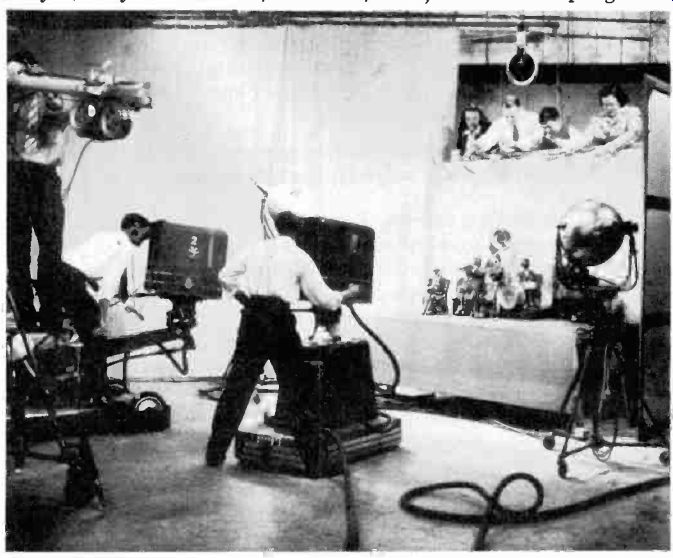
Figure 28. Televising a puppet show. This type of program has proved very
successful on television. (courtesy GE)
6-53 Musical Programs. The possibilities of musical programs on television have not been fully exploited. Telecasts of symphony orchestras, a few operas, and choral programs have been done with success. Regular televising of the musical drama shows, such as light opera or comedy is difficult because almost all action must be restaged to fit the requirements of the television camera. It remains to be seen whether television can stage such lavish productions as regular programming within reasonable economic and time limits.

6-54 Film. To date film has constituted a large part of television programming. Most of the films that are used are old and of poor quality, for few film companies are willing to permit the showing of their up to date pictures on the competing television medium. Even recent productions which have been televised are ineffective because the techniques used in regular motion pictures are not suitable for television. Unless film is expressly made to suit the small television screen, it loses its impact. Since the small television station will undoubtedly depend upon film to fill out its program schedule, just as small radio stations depend on recorded music, suitable film programs will necessarily have to be developed on a large scale.
The use by network stations of films, tele-transcribed from programs originating in-large stations, is one solution to the problem which has thus far been found.
6-55 Commercials. Television has the advantage over radio of being able to make the commercial a vivid and interesting picture. In fact, many commercials have proven to be as popular as actual programs. Campfire scenes have been acted out to advertise camping equipment; foods are sold on television by showing their preparation and cooking in kitchens scenes; gasoline is advertized by showing a scene at a service station, stressing the quality of service the particular company offers.
A common device to work the sponsor's product into the show is to display it as a prop in the set. Another subtle way to work in the commercial is to include the product's name as part of the backdrop for a skit. The viewer notices the advertising while watching the show.
6-56 Program Scheduling. The scheduling of television shows at the proper time to receive the greatest potential audience is a problem requiring considerable study. Much of the thinking on this subject has been adapted from the experience of scheduling radio programs.
Through the examination of polls as well as mail response, general information regarding the sex and age groups which make up the viewing audience at particular hours can be made.
Some general rules of program scheduling are fairly obvious.
It is unwise to schedule a program after 7 P.M. which appeals especially to children. Programs aimed primarily at women, such as beauty hints, cooking recipes, and fashion shows are scheduled at present in the evenings, but as television station operations expand to full daytime coverage, these programs will be scheduled for the morning and afternoons. The male audience predominates the evening hours after 7 P.M., though it has been proven that sports events will draw the male viewer at any hour of the day when he is near a receiver.
A careful study of competitive programs is another factor to consider when choosing the program hour and the format of a show. For example, it is unwise to produce a dramatic show to compete against a dramatic show which is enjoying a high rating on another station. It is far better to lure viewers away from the dramatic show with entertainment of an entirely different nature. One may count on a wide divergence of tastes among the audience and should select a program so different in appeal that it will attract its own supporters. A quiz show featuring audience participation and cash prizes might very well compete successfully against an already established dramatic series.
6-57 Conclusion. The problems of creating and producing tele visions shows at the current stage of television development fall largely into two classifications, the economic and the technical.
Despite the many handicaps which have been touched upon in this section, the future looks exceedingly bright. Television programming has grown out of the "if and when" phase and has become an actuality. As more and more sets are installed, and more viewers can be counted on by advertisers, more money will be spent on television productions. With larger budgets, most of these difficulties will be surmounted.